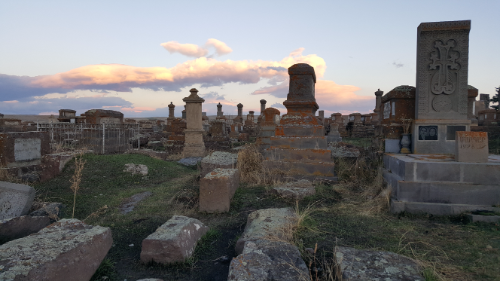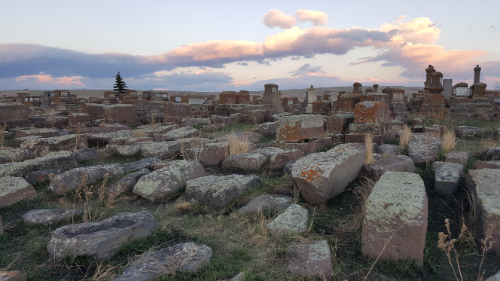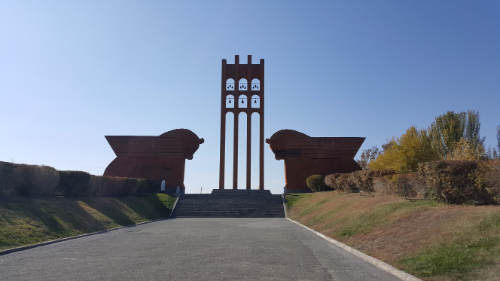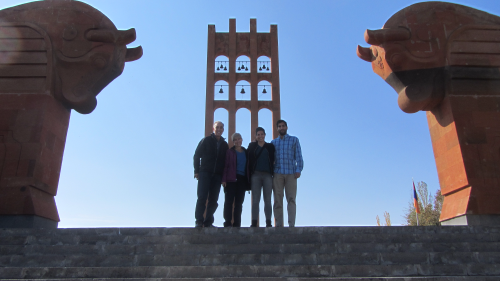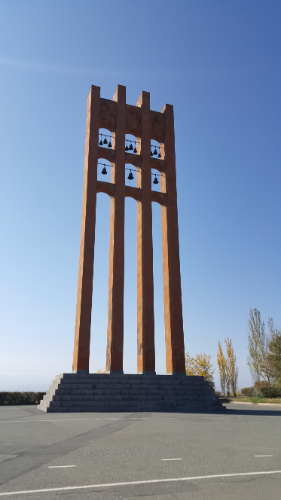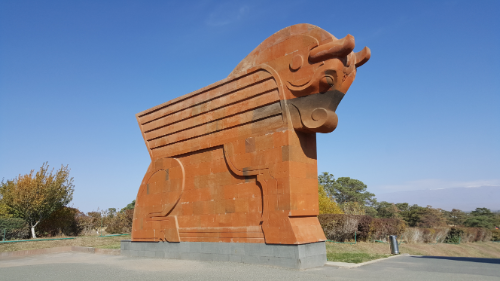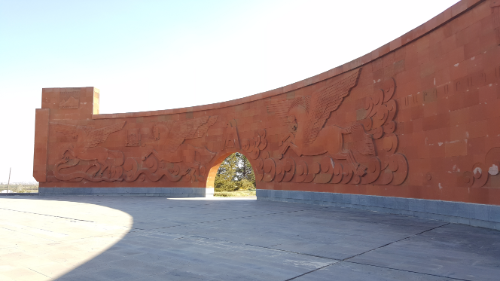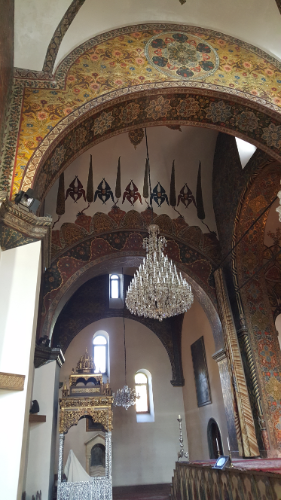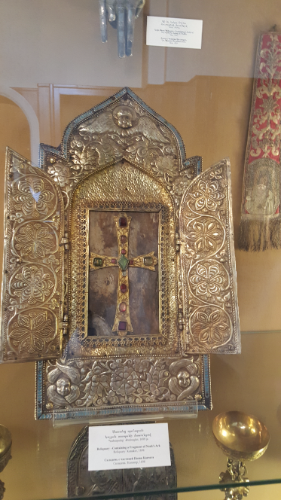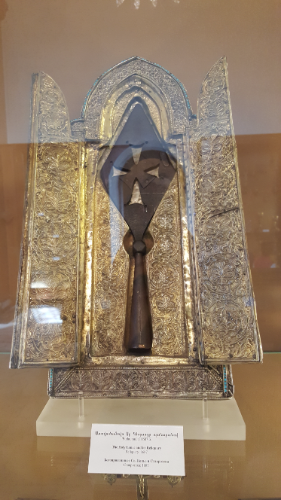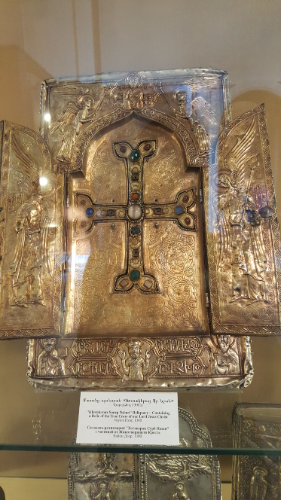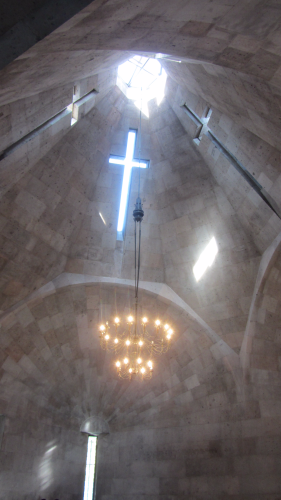My trek from Meghri to Kapan started VERY early in the morning, especially by Armenia standards. The marshrutka left at 7:30AM, but it actually wasn’t too hard to get up on time… thanks to all of the walking the day before, I had a fabulous, comatose night’s sleep.
Kelsey was going all the way to Yerevan, about eight hours, and I was hopping off in Kapan after about two. It was nice to have some company for the ride! I’m so used to going places by myself now that it always throws me off when I have a friend.
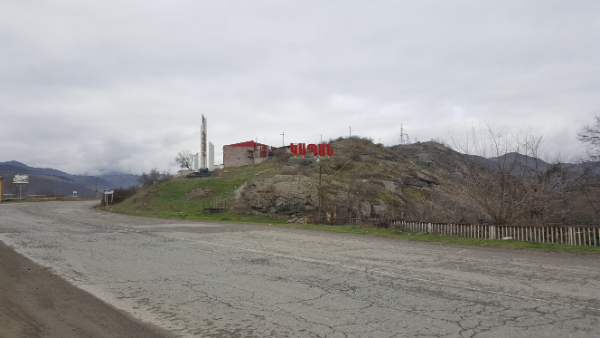
The marshrutka dropped me off right in front of my hotel for the night. I didn’t do much pre-planning for this trip (I’m trying to learn how to “go with the flow” and be okay with that), so I looked for somewhere to stay only one night in advance. According to the internet, there weren’t many cheap choices left. In hindsight, I feel like I should have just gotten dropped off in the city center and wandered around asking hotels if they had vacancies. Anyway, I didn’t do that, so I stayed at an inexpensive and NOT centrally located hotel. Everything except for the location was great! But that resulted in me having another ridiculous walking day.
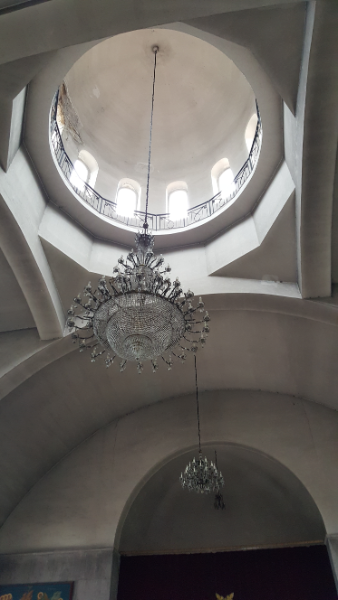
I had two sightseeing goals for the day, Halidzor Fortress and Vahanavank. According to google maps, it was a 15 km walk to Vahanavank, and Halidzor is in the same general area. I looked at that and thought, “Oh hey, that’s not bad! Only 3 hours!” Any rational person would have looked at that and said, “I’m going to ask the hotel to call me a taxi.” Oh, well. I figured that I would walk there and then find an alternate method of transportation back.
I walked about 40 minutes just to get to Kapan. The thing is, though, that you can’t just think of it as a long walk. You have to think about the fact that you’re seeing things you wouldn’t have seen otherwise because you don’t enjoy the scenery as much when you’re in a car. See? That’s my way of rationalizing my decision and telling you that it was the right one to make (though strong recommend that you just get a taxi if you’re ever in this situation). On my way through Kapan, I went to see the church, Surp Mesrop Mashtots. If you feel like you’ve heard this all before, it’s because every city/town/village in Armenia seemingly picks from the same list of five church names and ten street names, and things can get confusing very quickly.
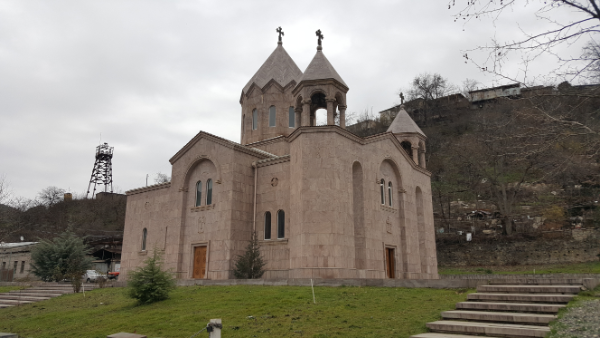
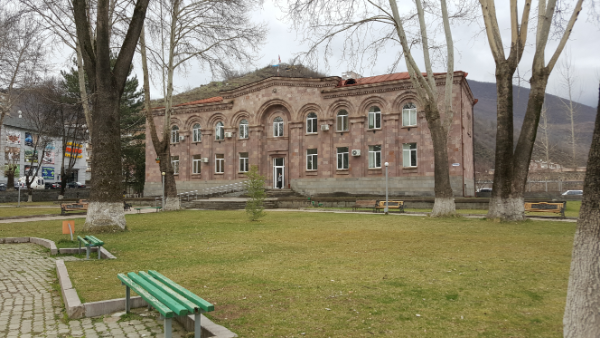
From there, I roamed a little more, stopped in a store to buy some snacks (where they stared at me like I was a Martian and forgot to put my human suit on – classic Armenia moment right there), and continued on my way. I walked more… a lot more… and eventually realized that I could have taken a bus nearly the ENTIRE way that I walked. Well. I got some good exercise, and I REALLY saw the scenery. After maybe 11 km, I finally got to the point where I turned off the main road and started heading up to Vahanavank.
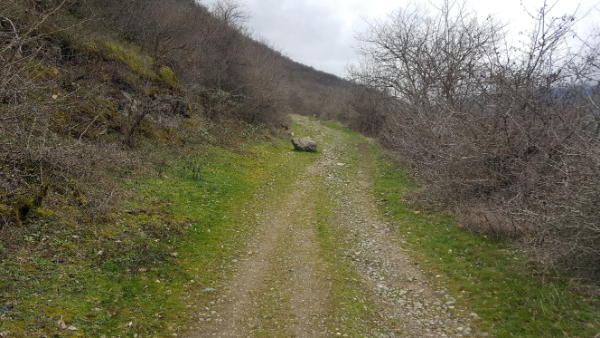

I was probably 20 minutes from the church when a car came up behind me. I did what I usually do and pretended that I had everything under control and totally wanted to be walking up a mountain after already walking for almost three hours… and at that moment, I got caught on a spiky plant and had to stop to untangle myself. So much for looking like I knew what I was doing. The driver pulled up next to me, rolled down his window, and asked if I was going to Vahanavank… as if there was any other reason I would be walking on a random mountain road that literally only leads to the church. I said yes, and he told me to hop in. I’m not too proud to accept a ride, especially when my legs are ready to fall off, so I got in and we were at the top in three minutes.
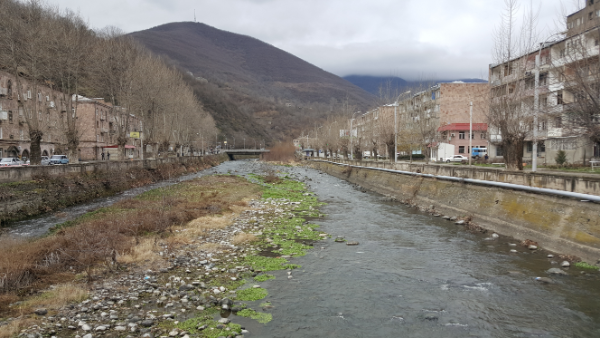
When we got to the church, there was actually a priest there! I was so thrown off. I think that’s literally the first time I’ve ever seen a priest in a church who wasn’t in the middle of conducting a service. The guys who picked me up seemed to be buddies with him, and I heard them telling him that they picked me up on the side of the road. I started poking around the church, and the priest invited me to drink tea with them… which he was in the process of heating water for on his little propane tank. Ha! It was a little chilly up there, and I was kind of hoping for a ride back down the mountain too, so I said okay.
The priest spoke some English, so our conversation was actually pretty good. I spoke broken Armenian, he spoke broken English, and we figured it out. He was excited that I’m an architecture person (no one knows what an architectural engineer is, so they usually just decide that I’m an architect), and after tea, we walked around the church and he pointed out different architectural features.
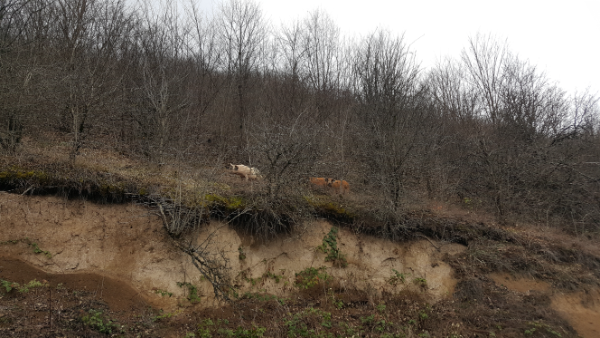
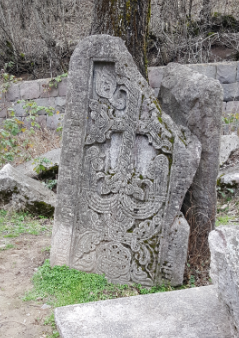
Vahanavank was founded in 911 by the prince of Kapan, Prince Vahan, who supposedly became a monk to cure himself of a demonic possession. The main church is called… wait for it… Surp Grigor Lusavorich aka Saint Gregory the Illuminator Church. It functioned as a monastery and a spiritual school for some time, and there are a bunch of graves in/around the church, including Prince Vahan and many other kings and princes of Syunik (the province where Kapan is located).
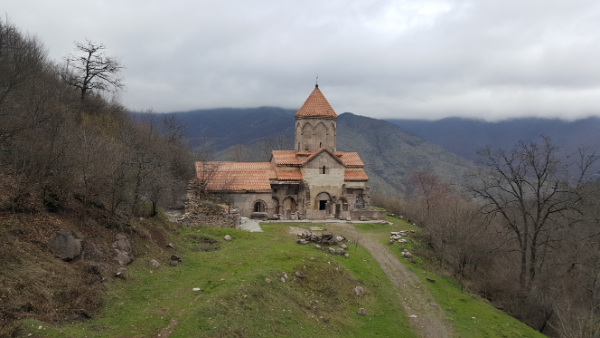
There’s another little chapel on the grounds as well, Surp Astvatsatsin, that was built by one of the Syunik queens, and it also serves as a mausoleum for her and her relatives. It seems like people just built churches when they wanted fancy places to be buried.
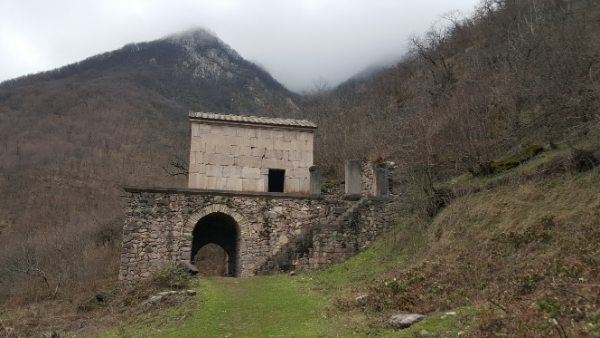
There was an earthquake that destroyed practically everything on the grounds, and they just recently did some restoration work that was never finished. The main chapel of Surp Grigor Lusavorich Church was completely restored, but the vestibule on the side is only partially completed. The priest showed us where they put in different structural features to help if there’s ever another earthquake and the difference between the original and the new stones. The original stones were quarried from a neighboring mountain, but the new ones were brought in from elsewhere.

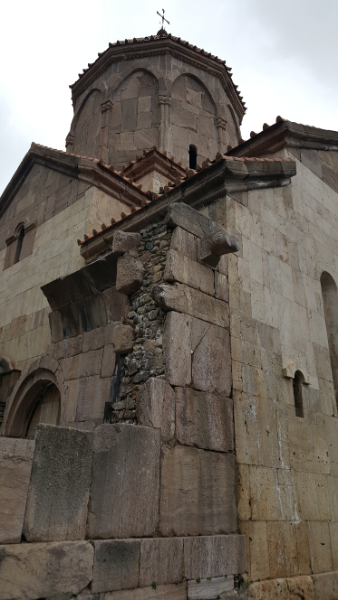
I stayed at Vahanavank MUCH longer than anticipated. If I had gone on my own, I probably would have stayed 15 minutes max and then kept going to Halidzor. Instead, I was there for more than an hour. When they asked where I was going next and I said Halidzor, everyone looked at me like I was a lunatic. They went on and on about how it had just rained and the path was going to be muddy and I shouldn’t go. Usually I’m not one to listen to things like that, but I was kind of cold and the sky had been overcast and dark all day, and I was a little worried about getting stuck out there in the dark. The priest gave me his phone number in case I decided to go and needed help, but I ended up deciding that I had walked enough for one day. I asked the guys who gave me a ride where they were headed, and they said, “Wherever you’re going.” I kind of assumed that would be the answer. People are too nice.

They drove me all the way back to my hotel, laughing the entire time about the fact that I had walked all the way there. I’ll tell you this much – it seemed like a long way even in a car! At least I got my exercise in for the day! I was happy to have some extra chill time at the hotel to take an incredibly long, hot shower and attempt to warm up. The weather was much colder than I expected, and when I stopped walking at my breakneck pace, I think my body got pretty cold.
Anyway, it was certainly an adventure, and now I still have things to do the next time I go to Kapan! This trip is just making me even more sure of my thoughts that I need to come back to Armenia someday. Maybe Sarah and I will do another trip to conquer all of the hiking destinations!

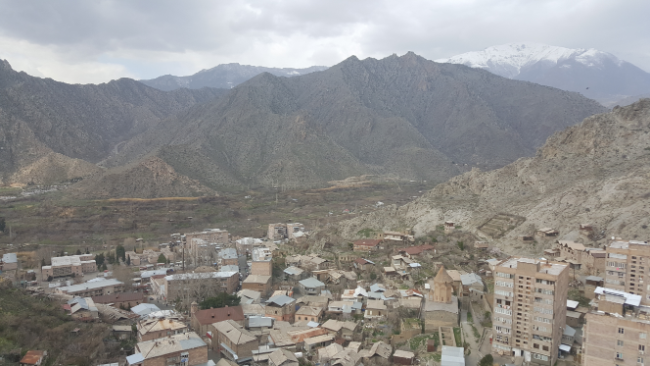

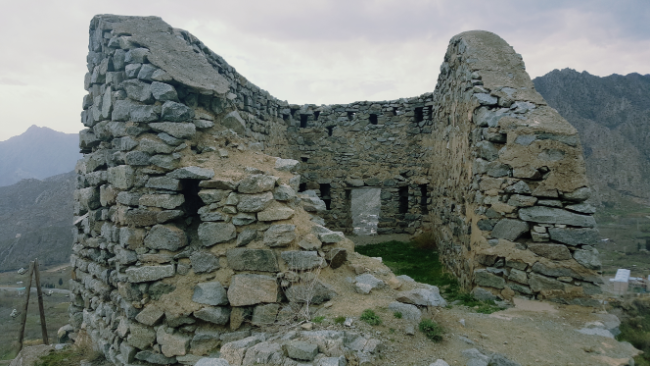
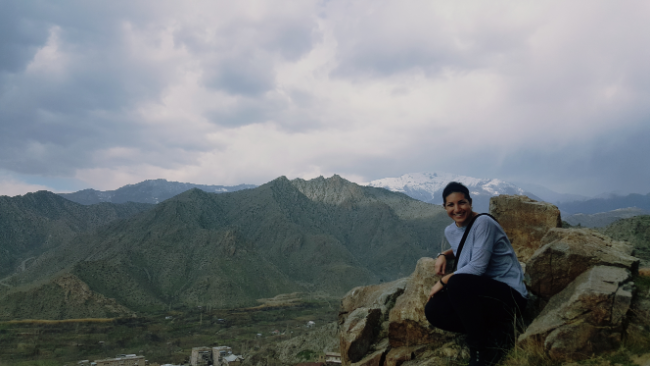
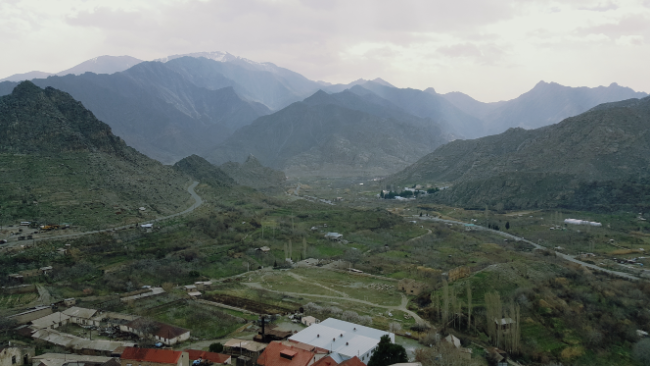
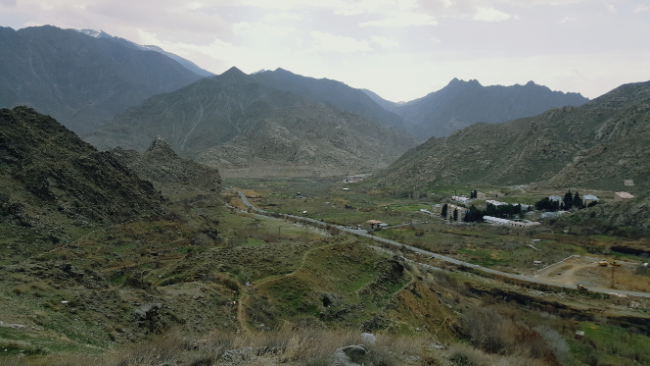


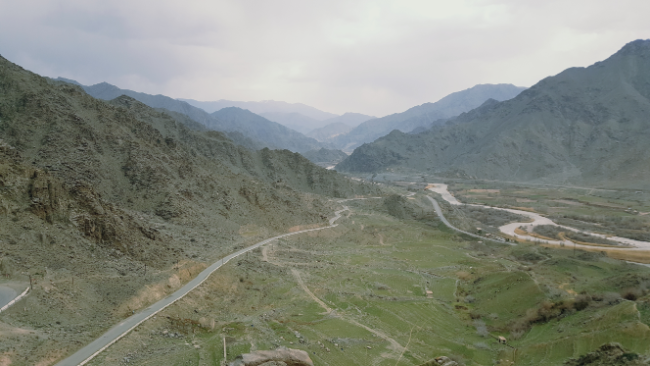
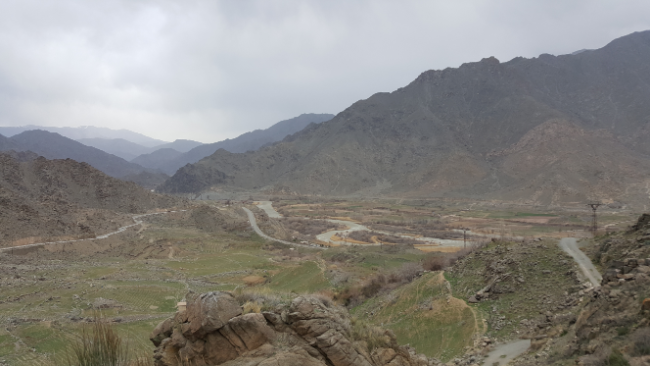
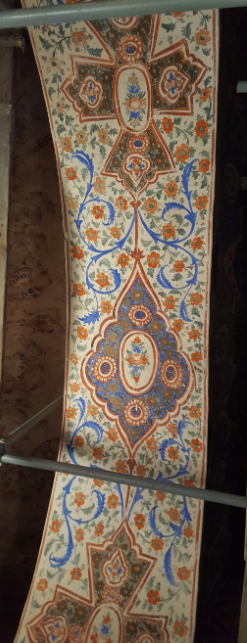
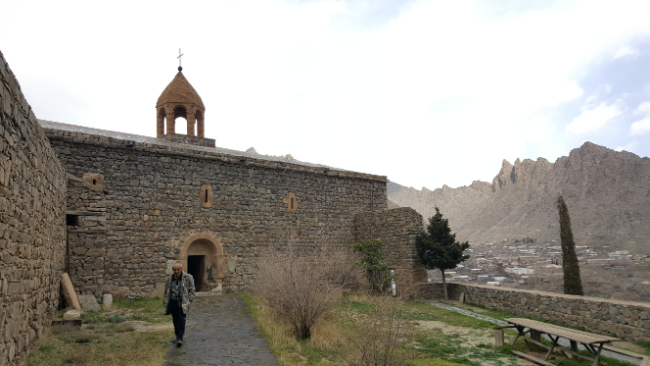
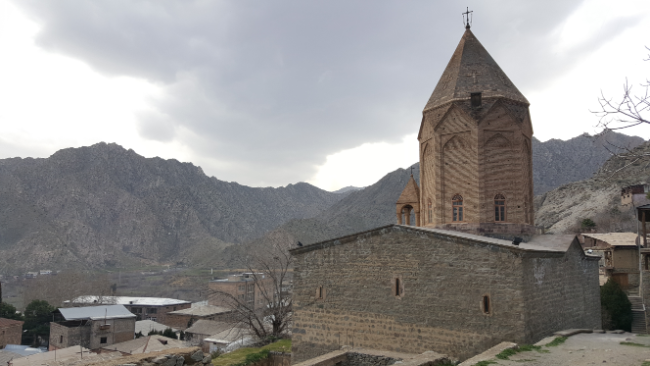
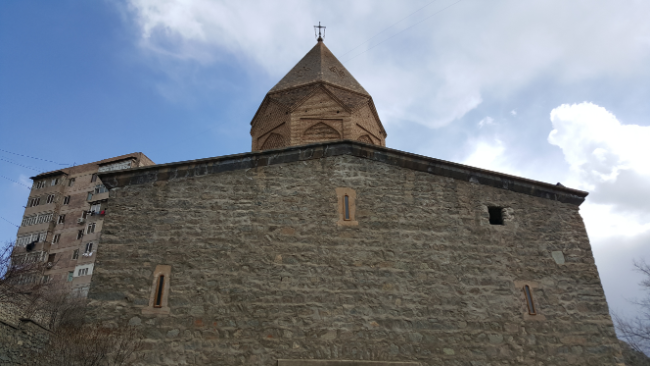
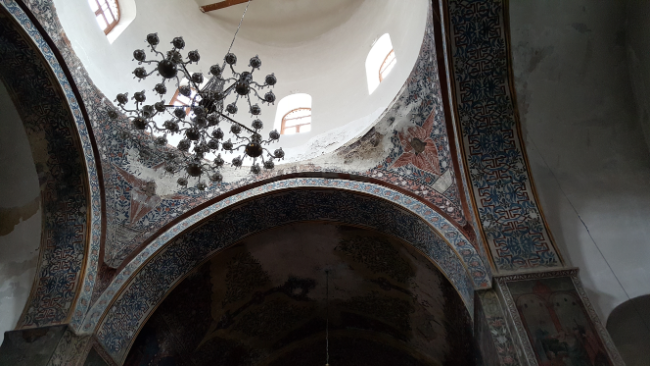
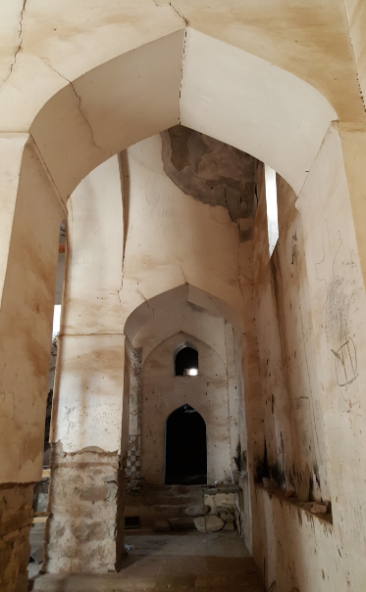

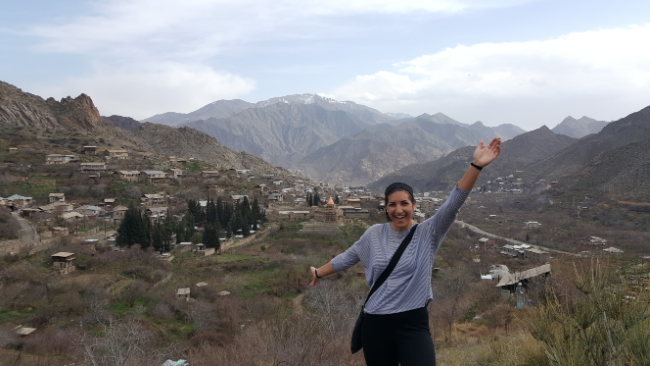


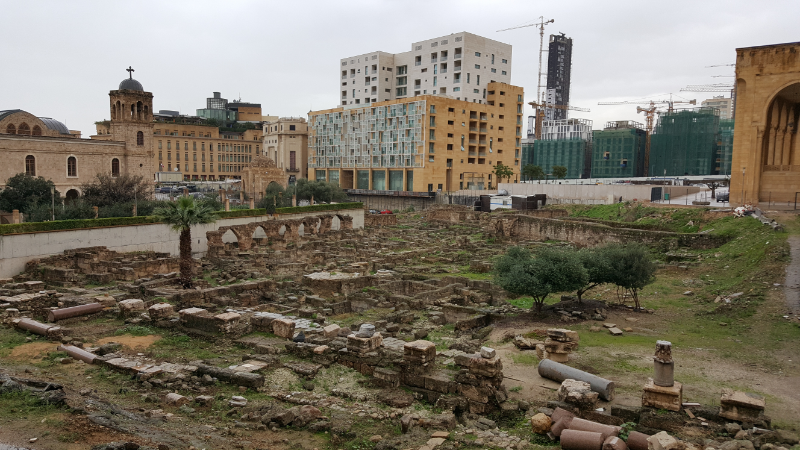
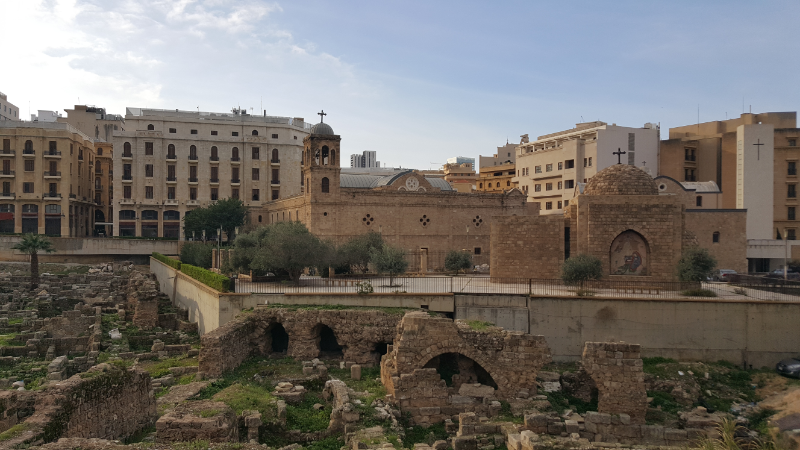


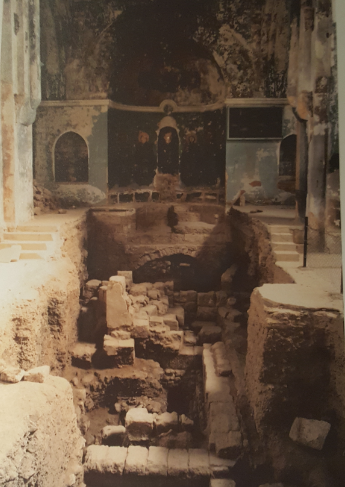
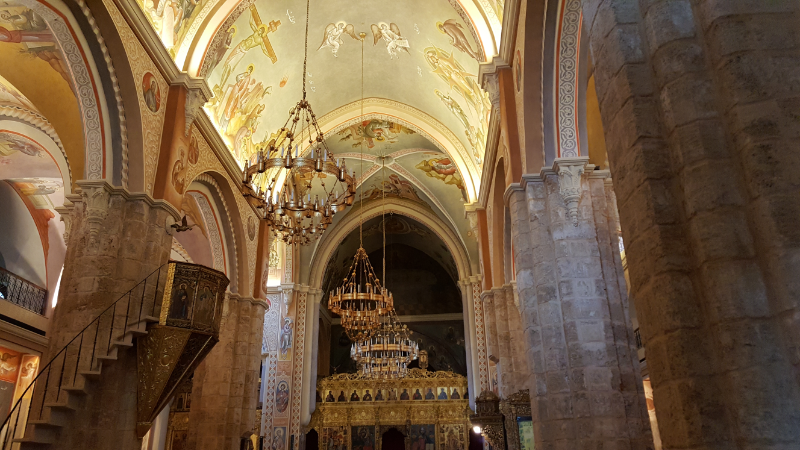
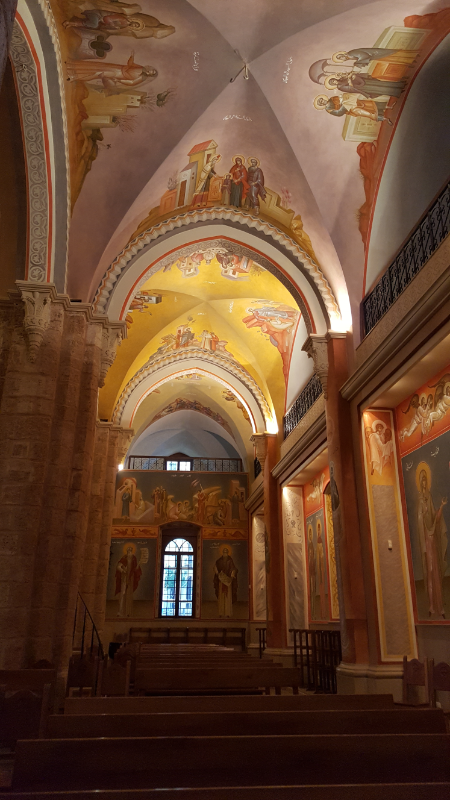
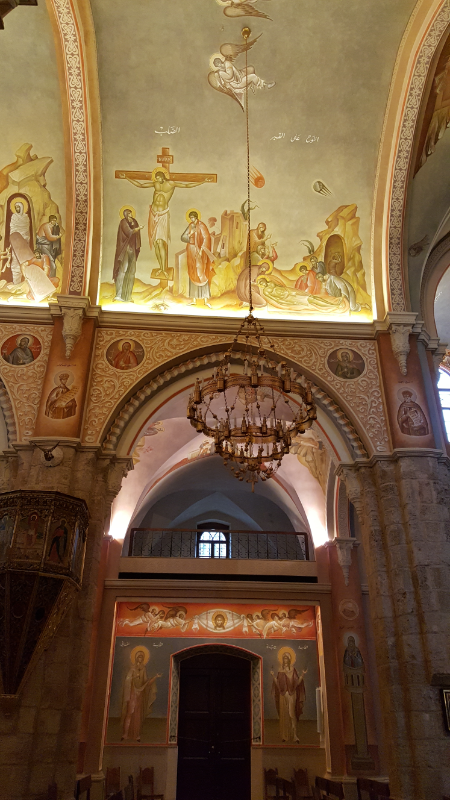
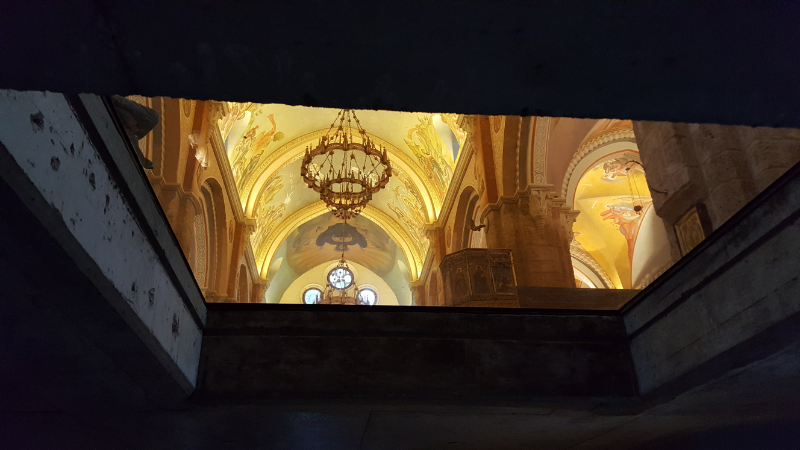

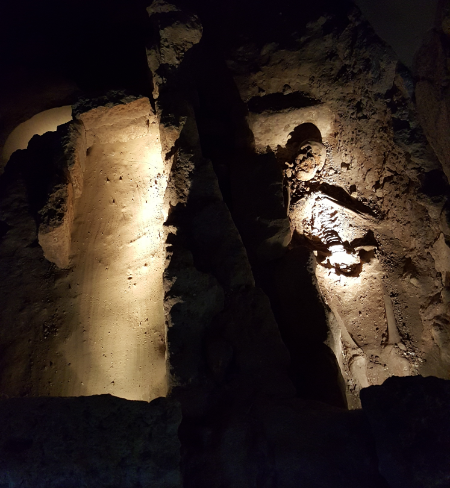
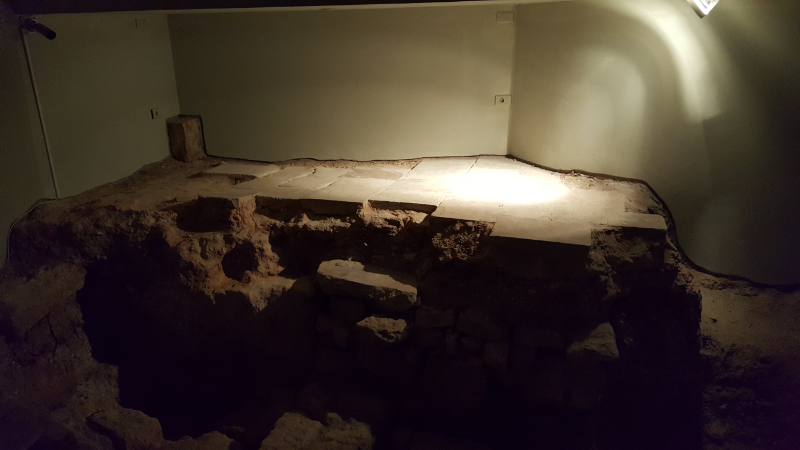
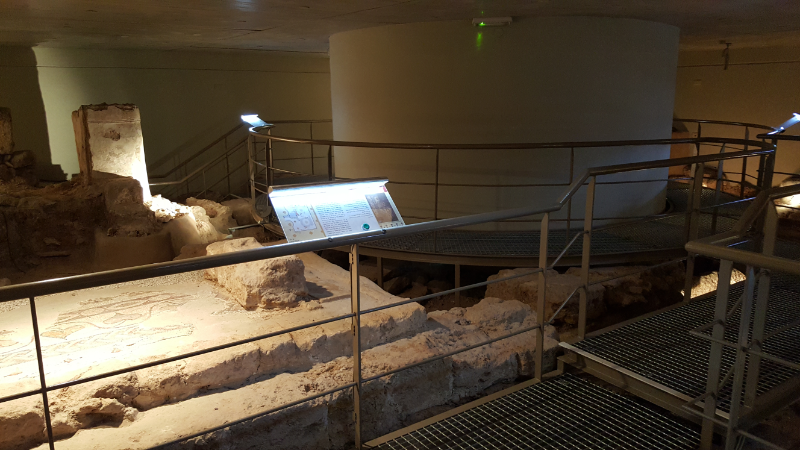
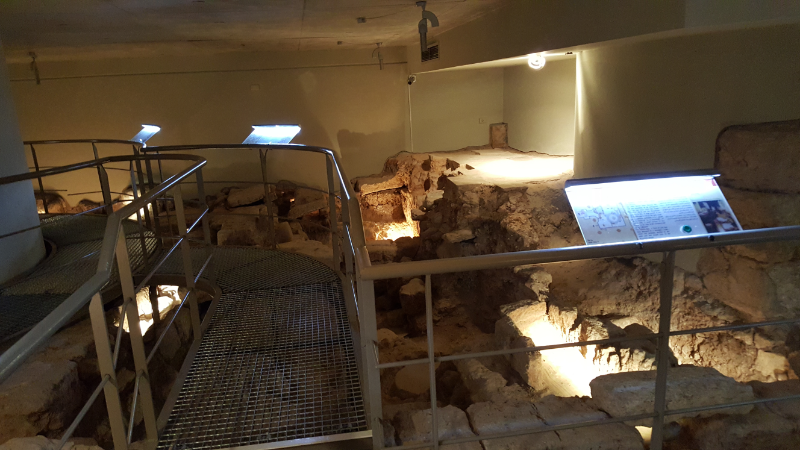
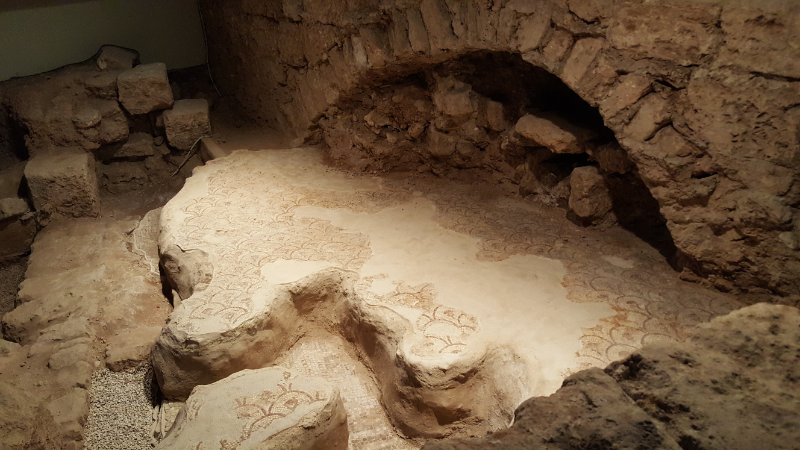
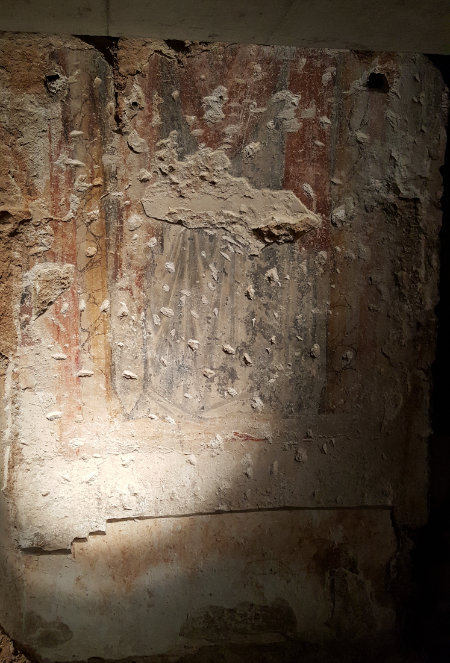


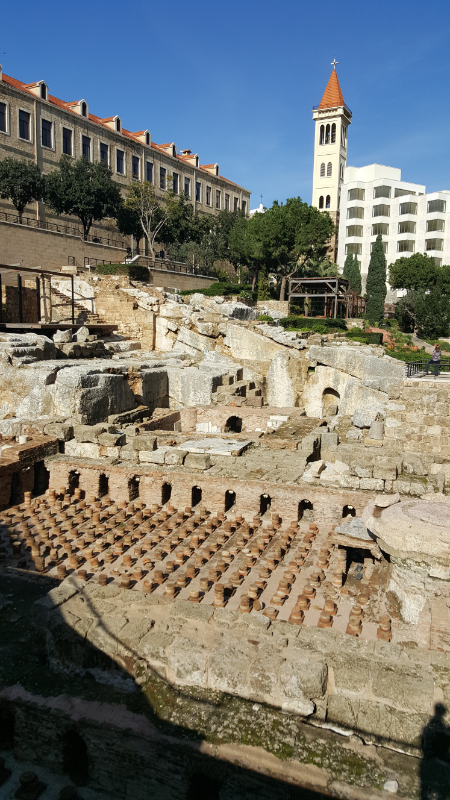

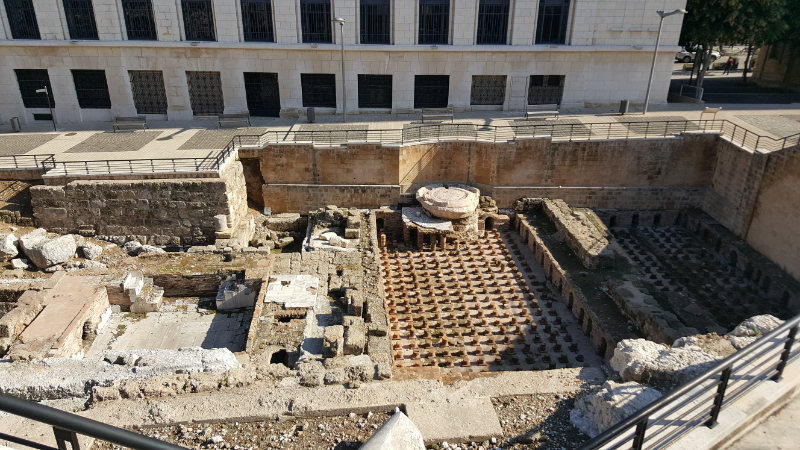
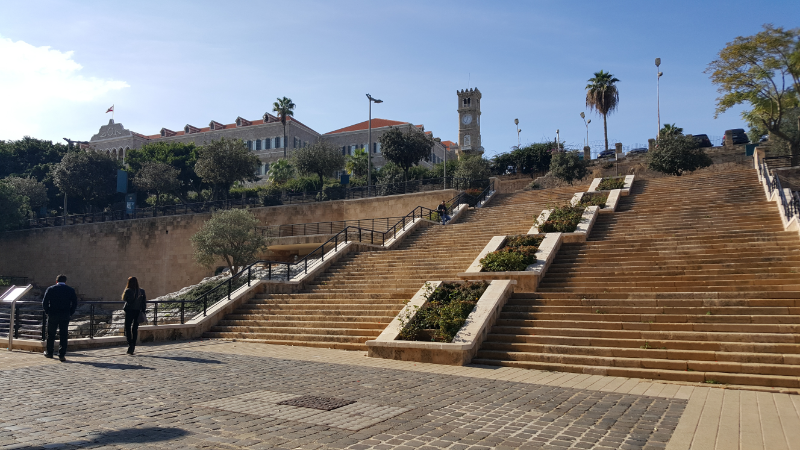
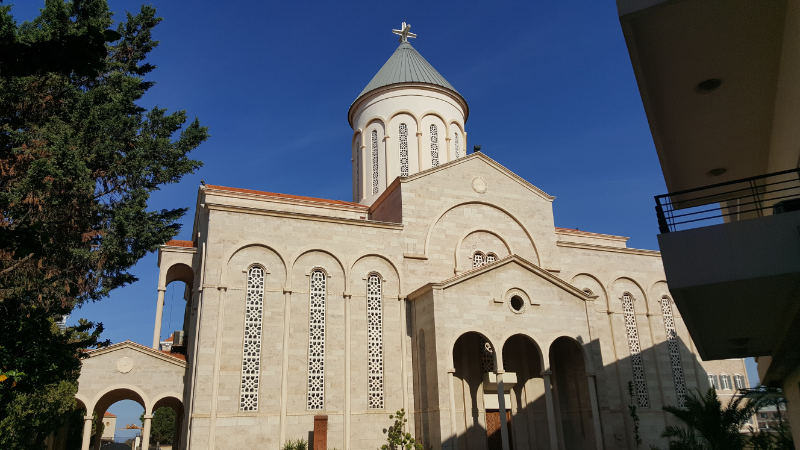
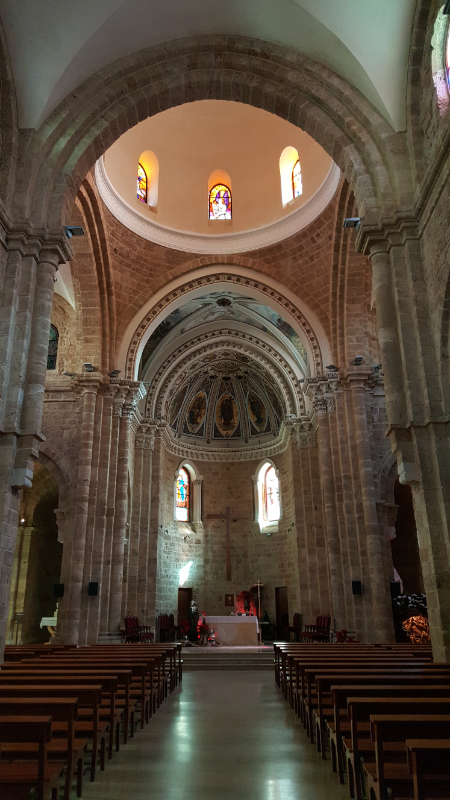
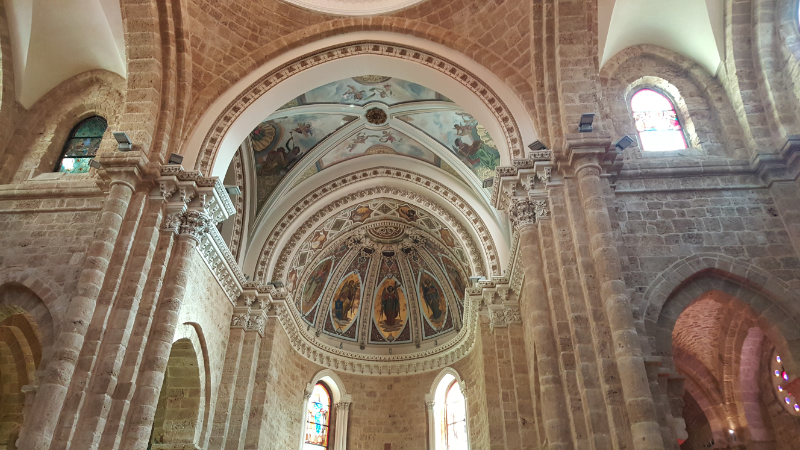
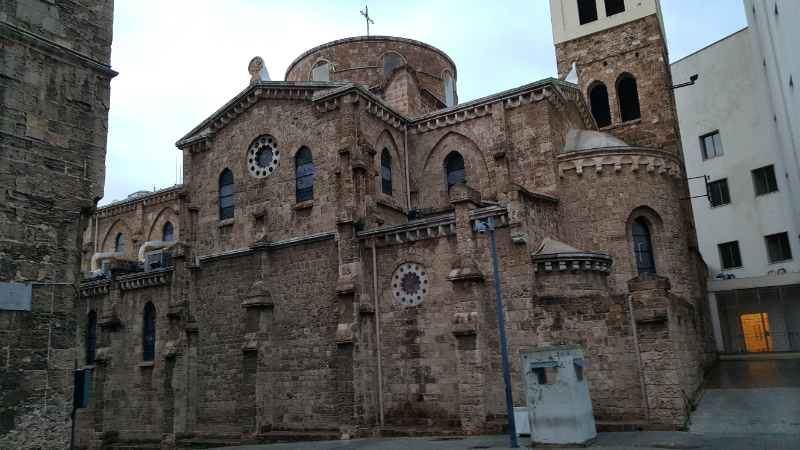
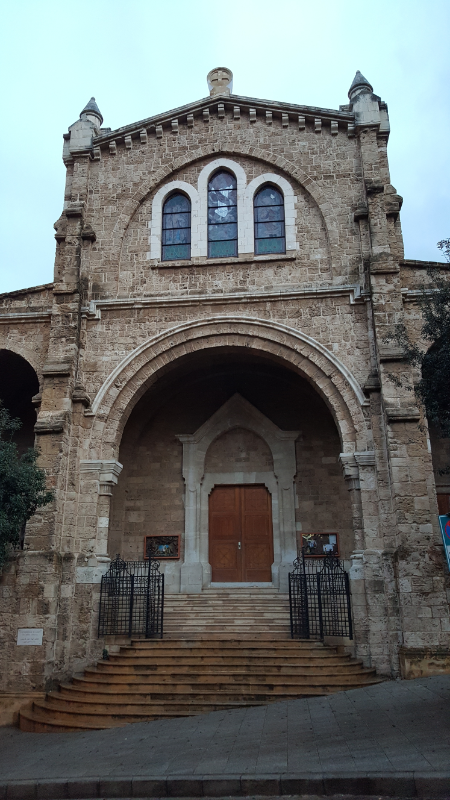
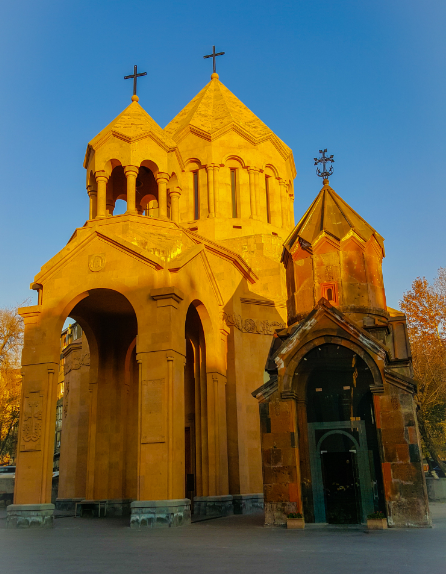
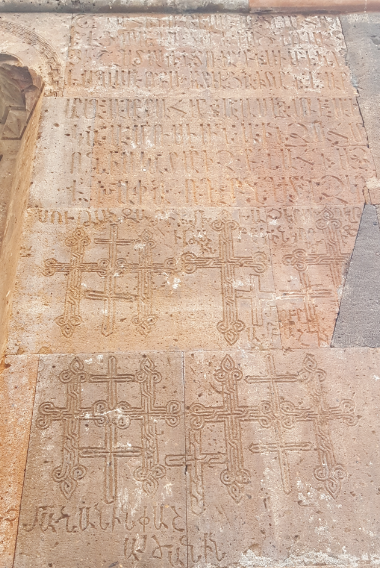
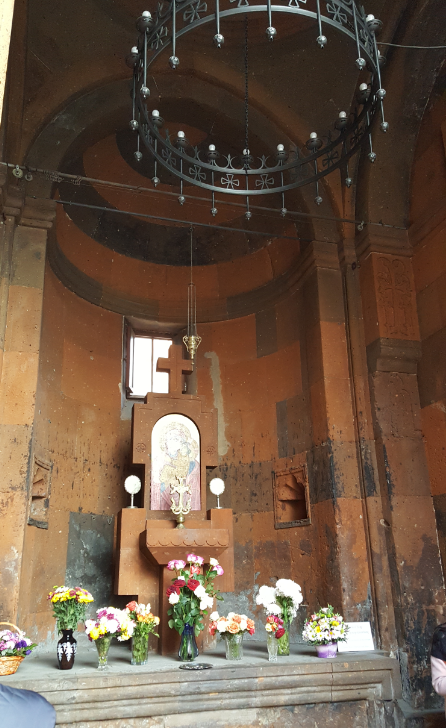
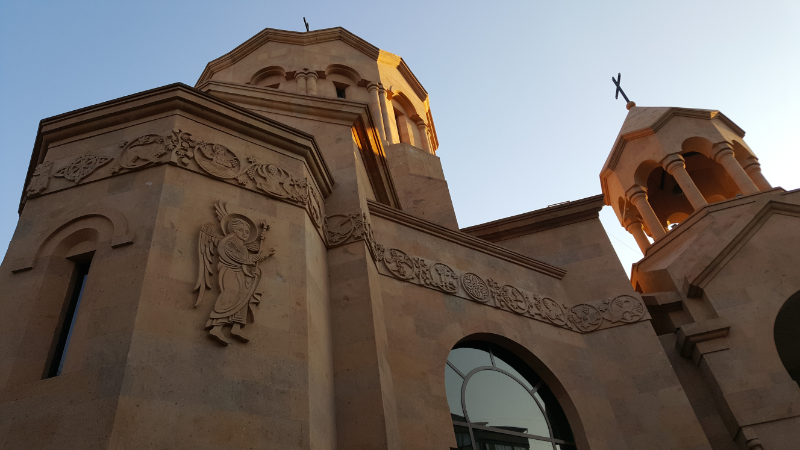
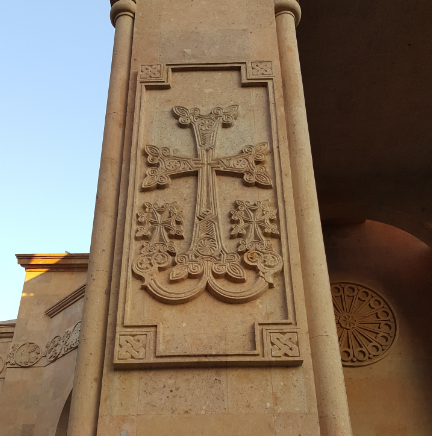
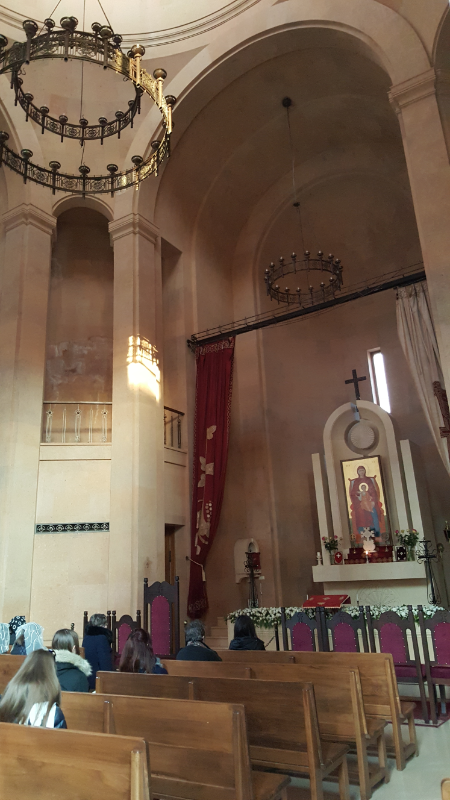
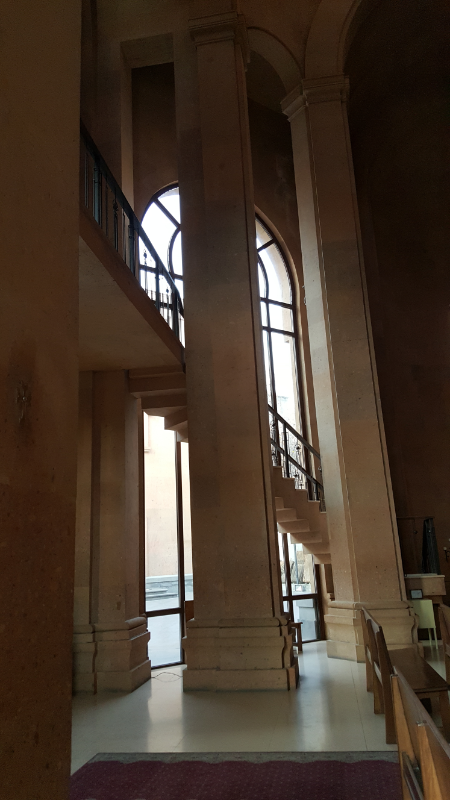
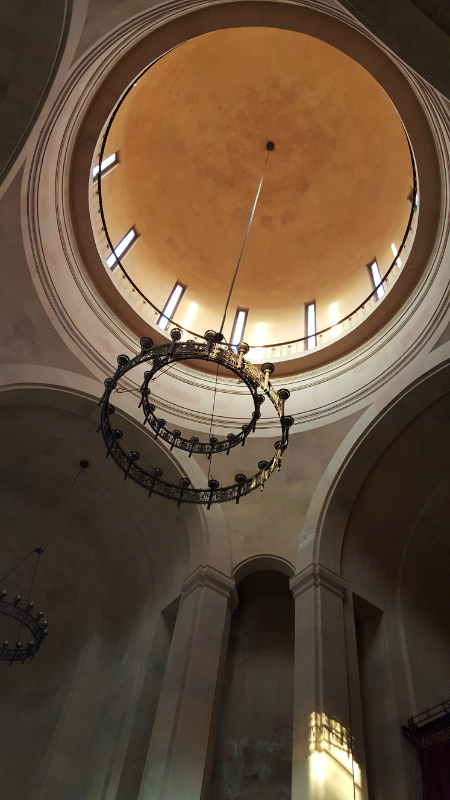
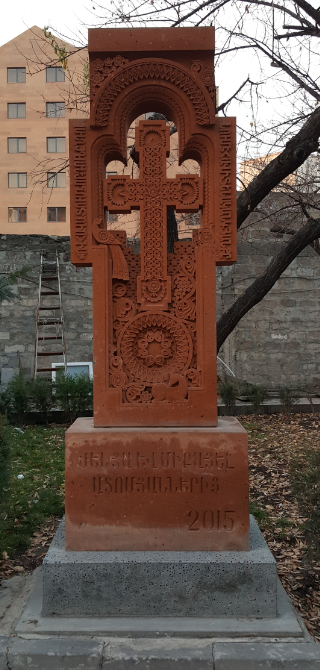
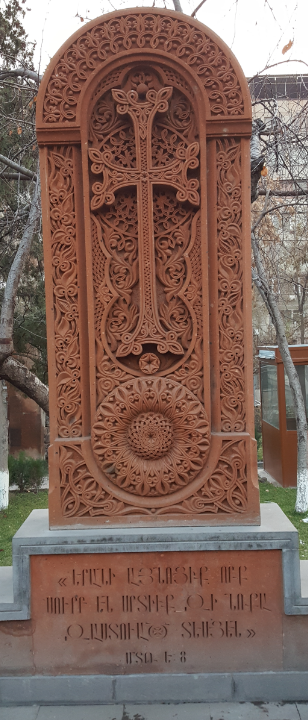 From there, I walked a few blocks to Zoravor Surb Astvatsatsin Church. This place was barely on my radar and ended up being full of surprises! Getting there was the first adventure. It’s hidden in the middle of a bunch of tall apartment buildings. If I hadn’t read about it ahead of time, I would have thought that I was going the wrong way. I was still second guessing my route a bit, and then, out of nowhere, there it was! The church isn’t anything grand or magnificent, but I liked it. There was a service going on inside, and everything about the building felt cozy and homey rather than cold and impersonal like some other churches.
From there, I walked a few blocks to Zoravor Surb Astvatsatsin Church. This place was barely on my radar and ended up being full of surprises! Getting there was the first adventure. It’s hidden in the middle of a bunch of tall apartment buildings. If I hadn’t read about it ahead of time, I would have thought that I was going the wrong way. I was still second guessing my route a bit, and then, out of nowhere, there it was! The church isn’t anything grand or magnificent, but I liked it. There was a service going on inside, and everything about the building felt cozy and homey rather than cold and impersonal like some other churches.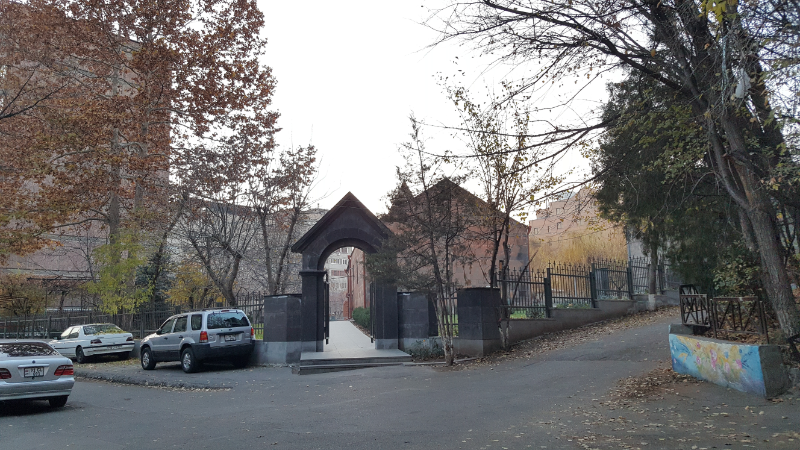
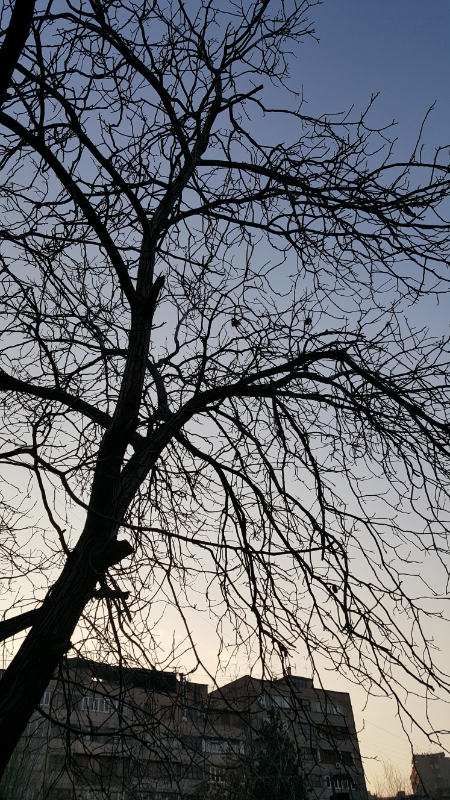
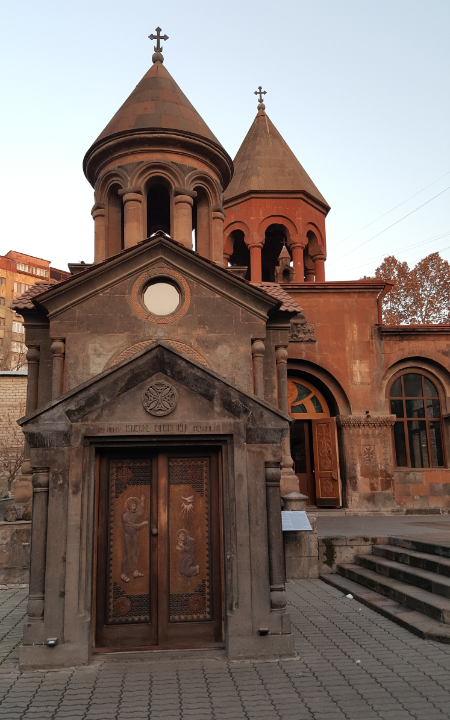

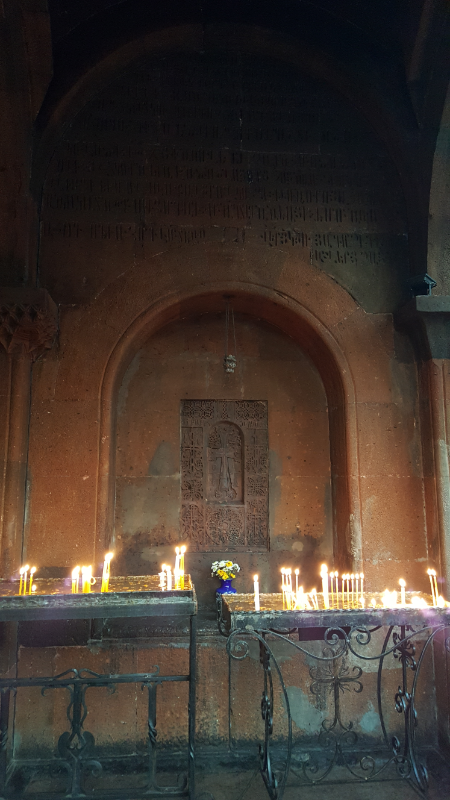
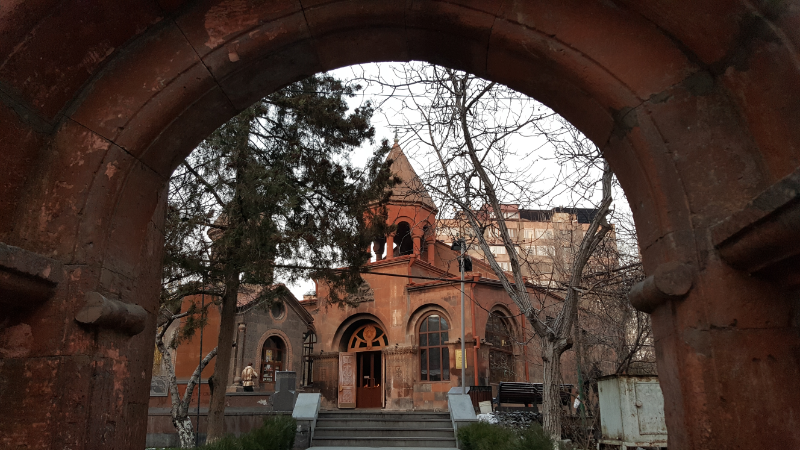
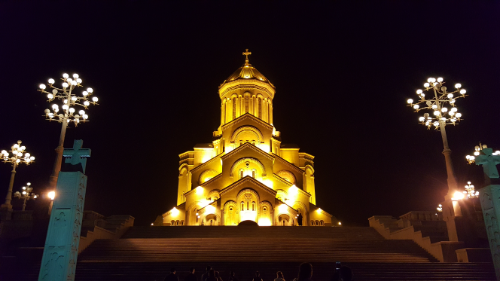
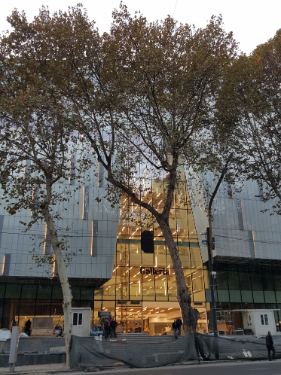
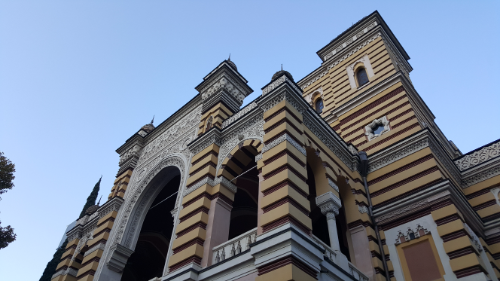
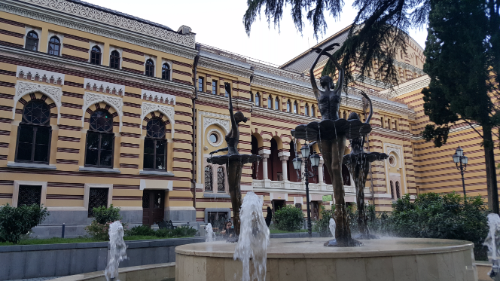
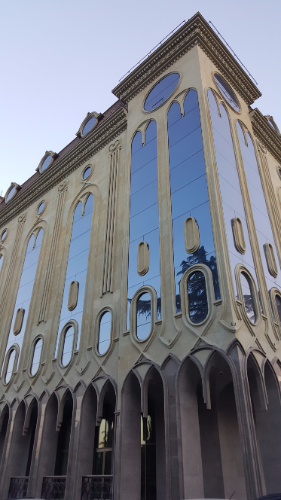
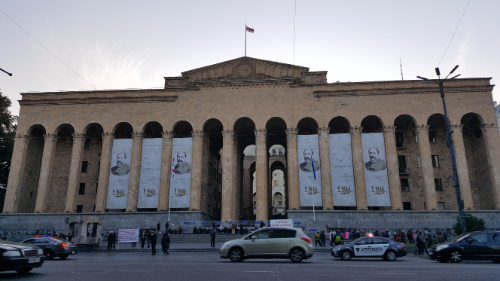
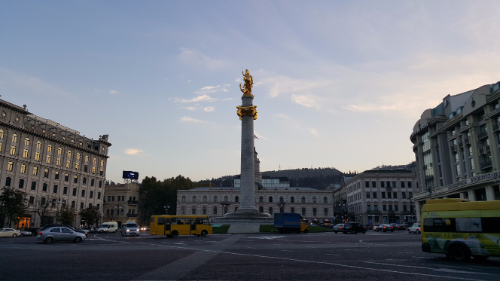
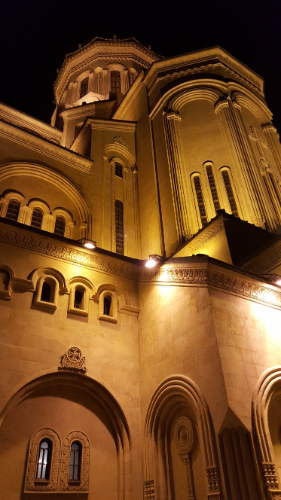

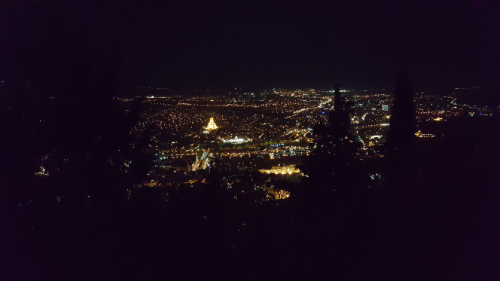
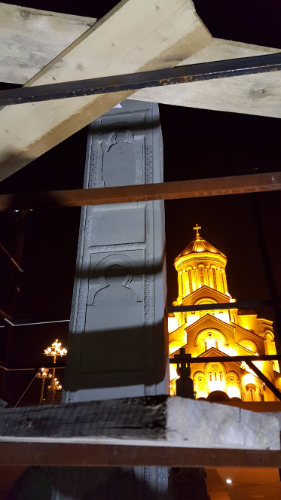
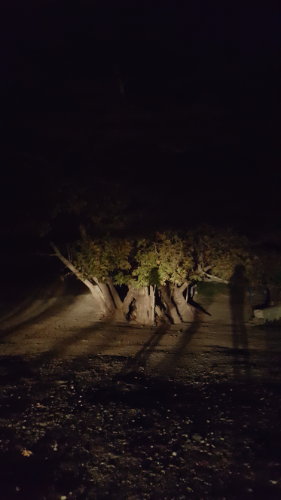
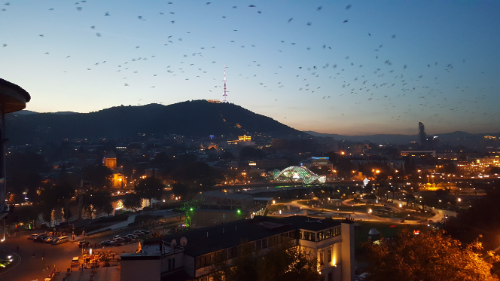

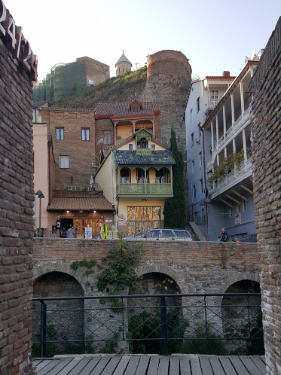
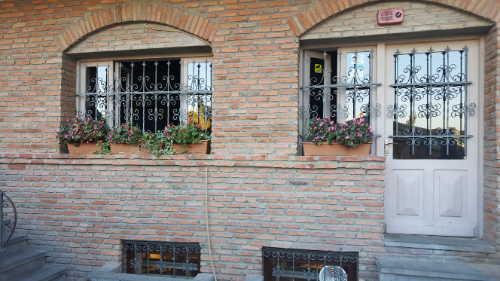

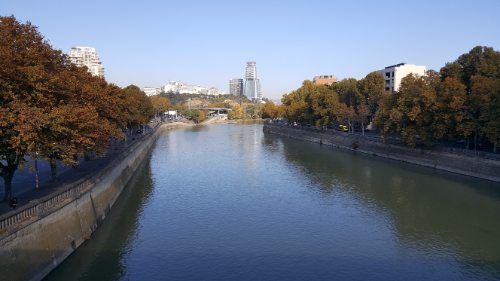
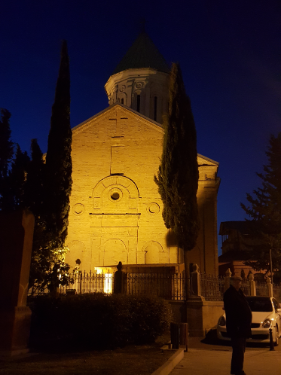
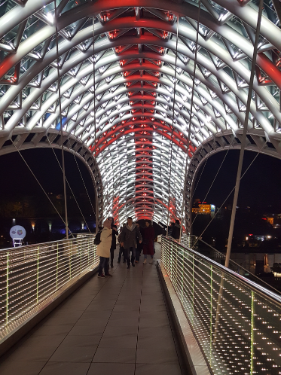
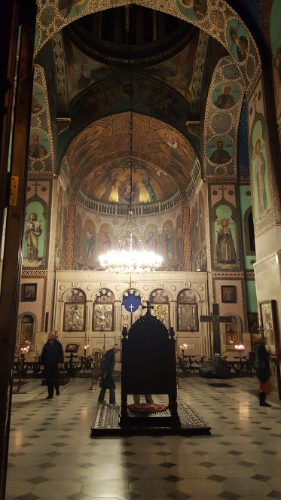
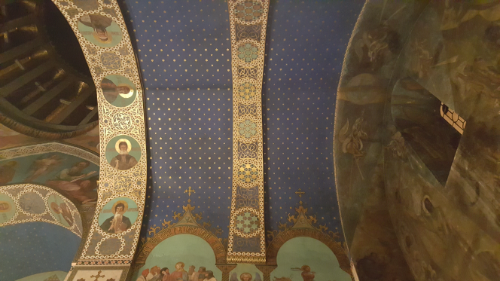
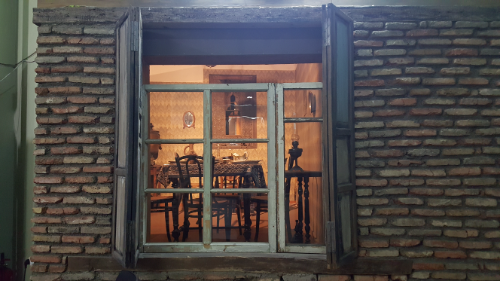
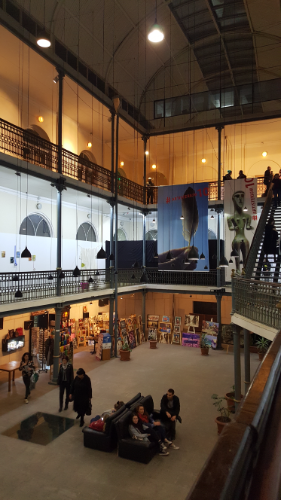
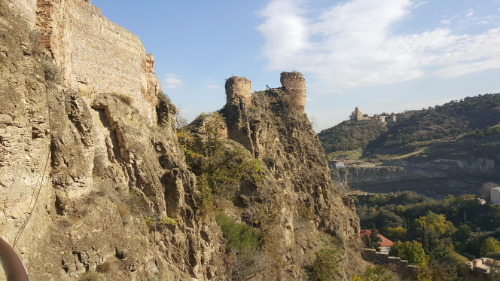
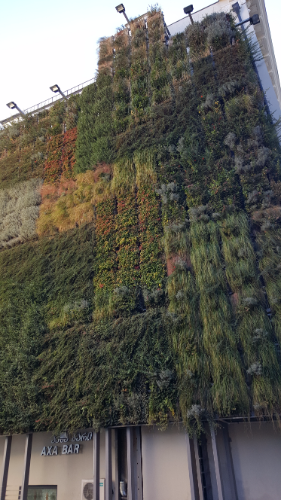
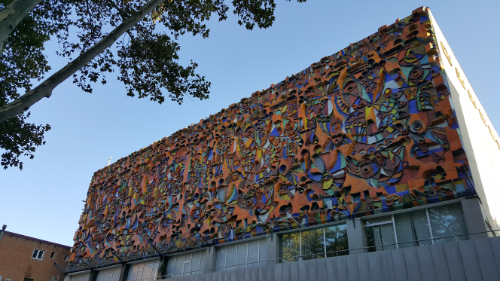


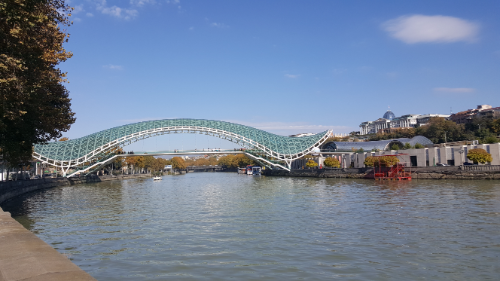
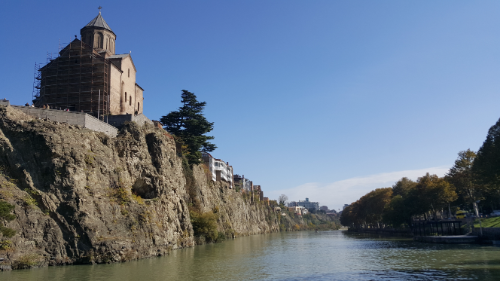
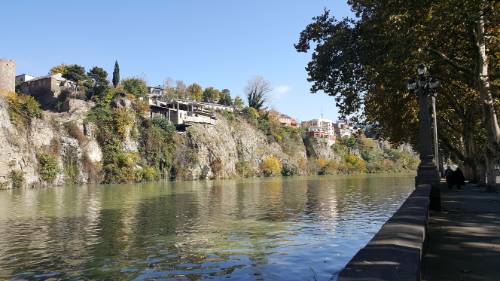
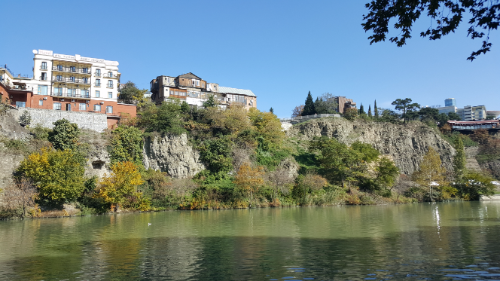

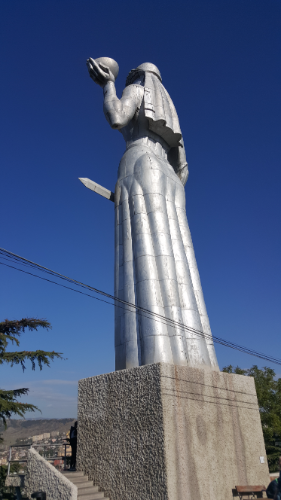

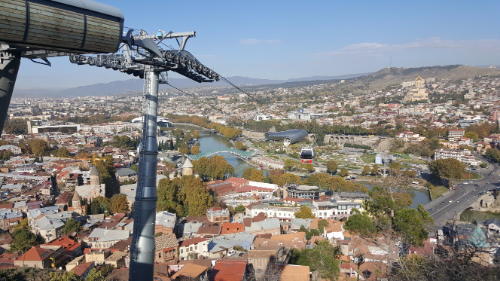
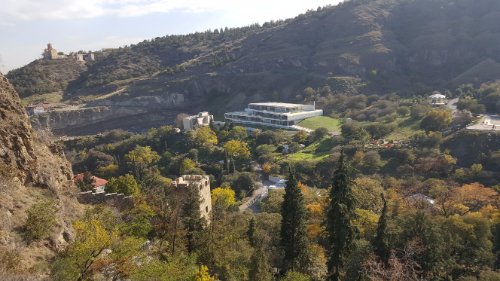
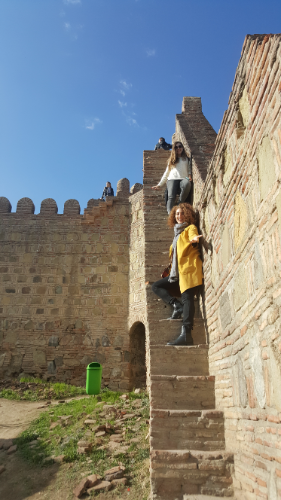
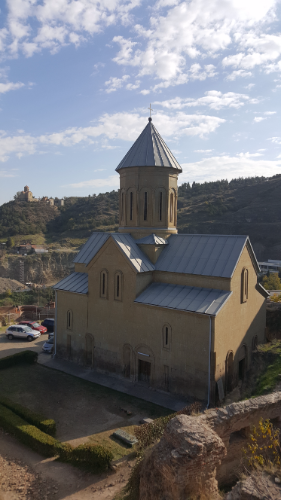
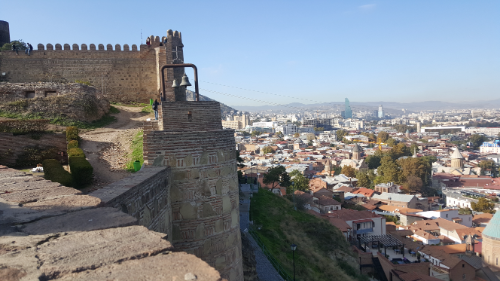
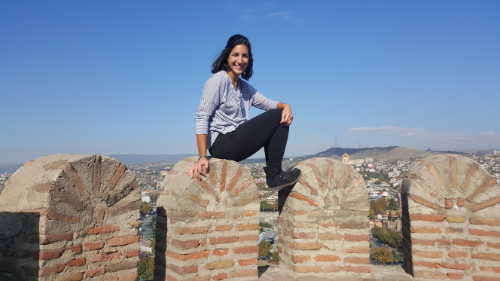
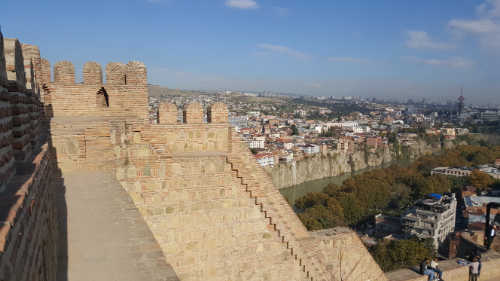

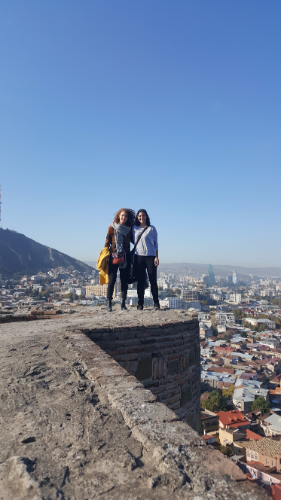
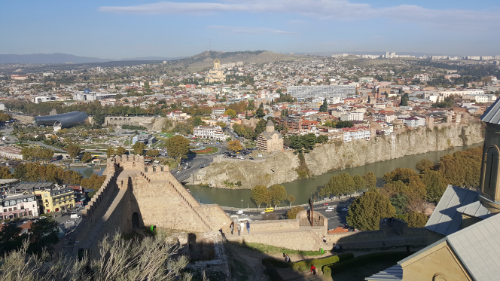
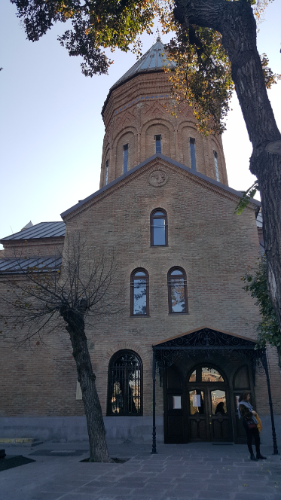
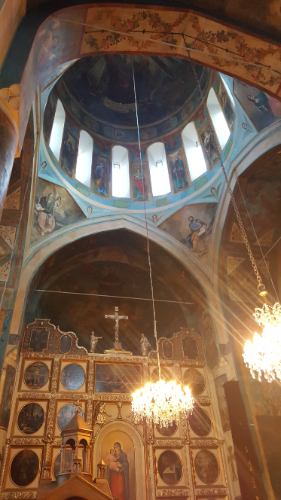
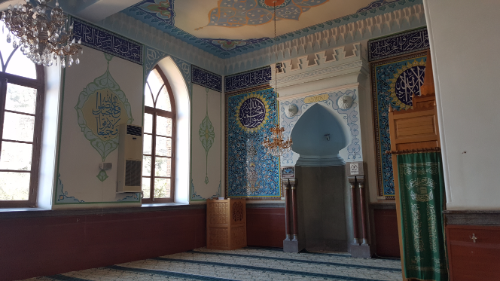
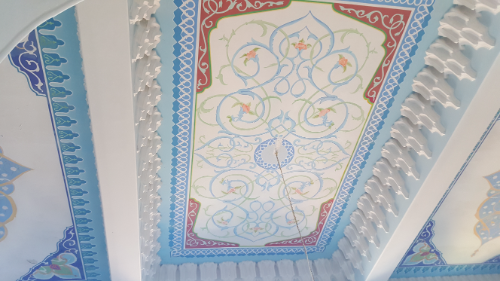
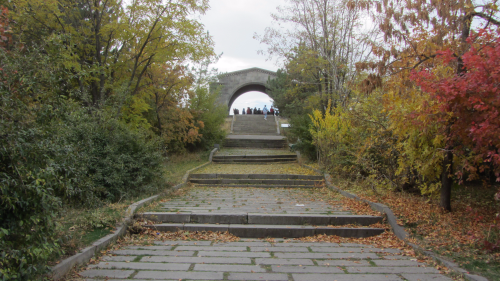
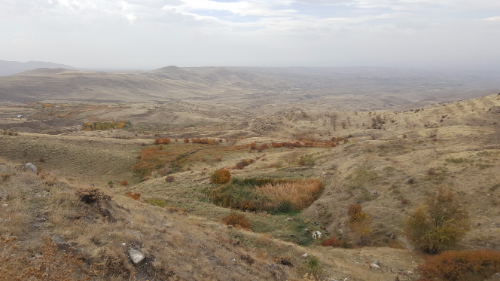
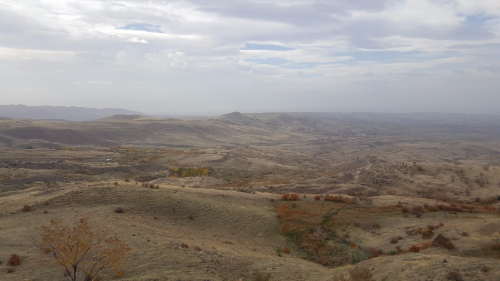
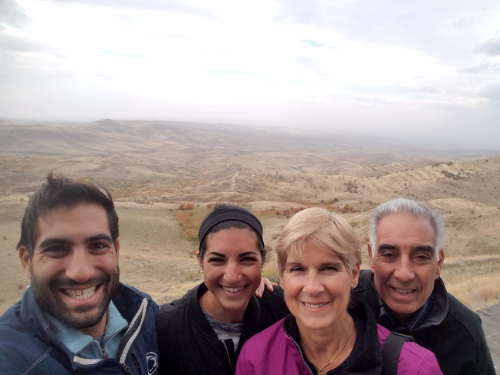



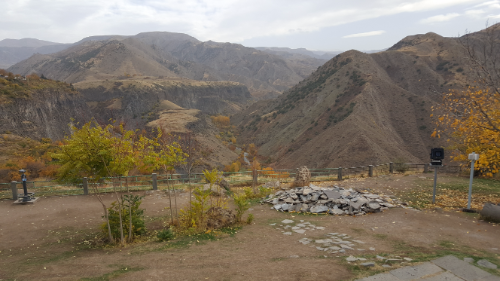
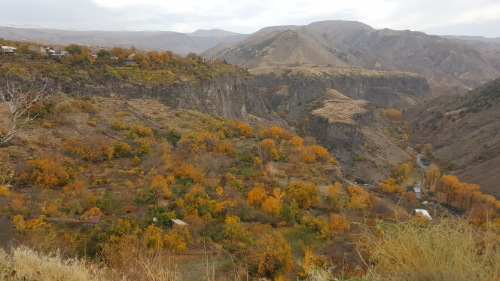
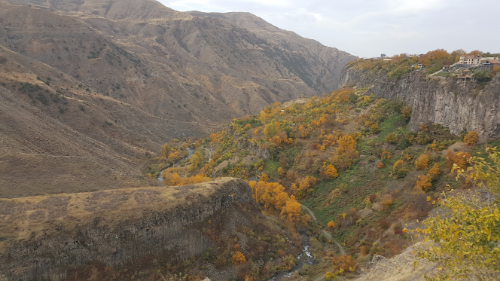
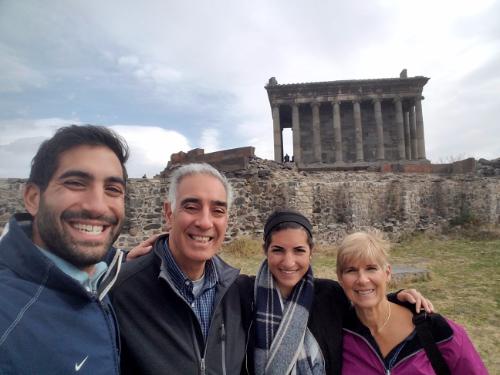
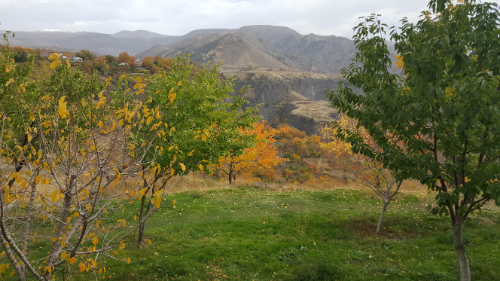

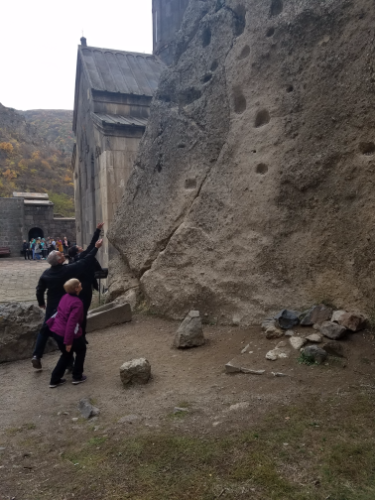
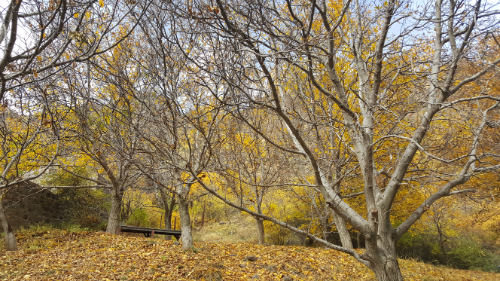

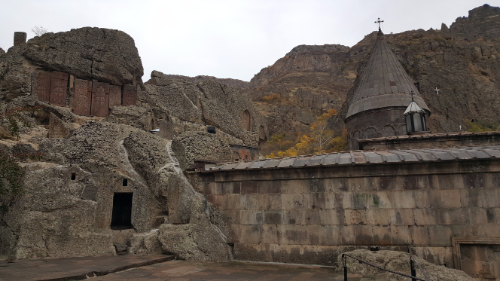


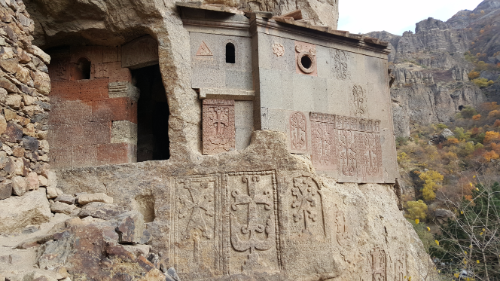
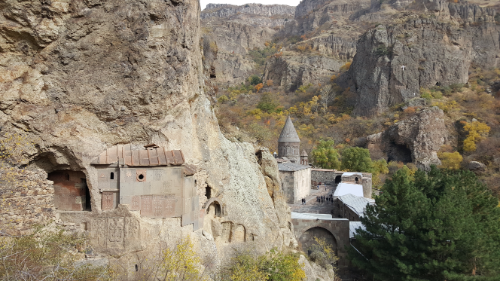
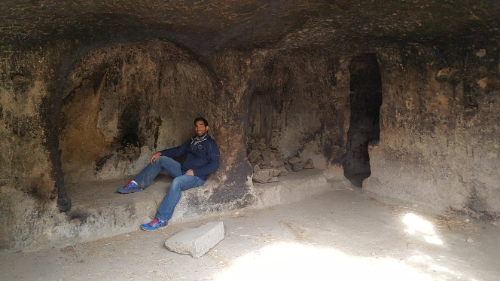
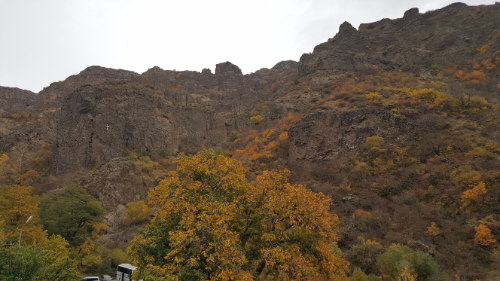
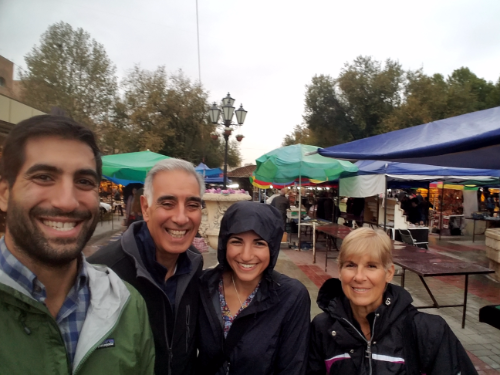
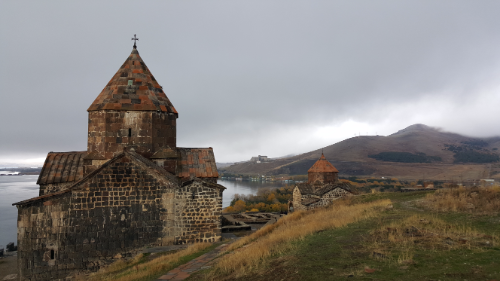
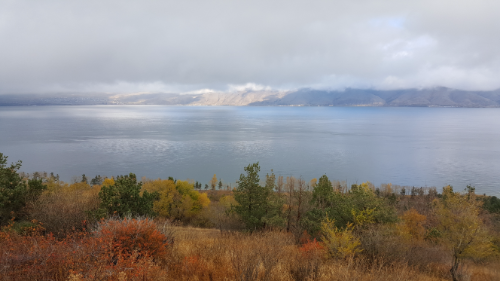
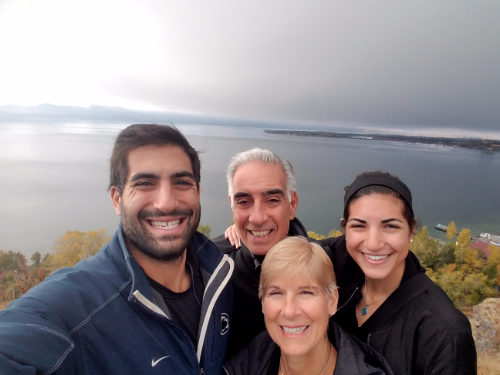
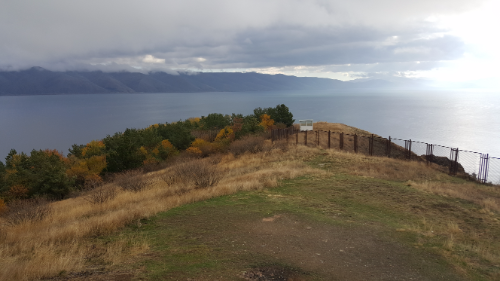
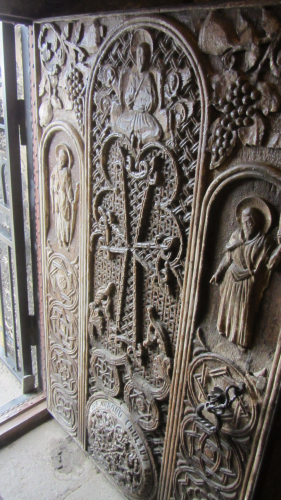

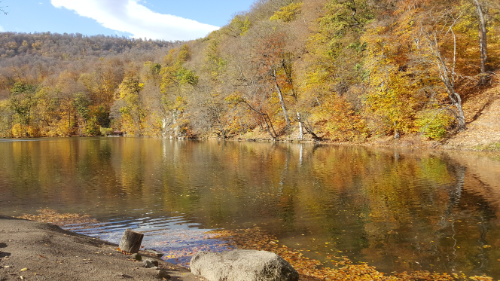
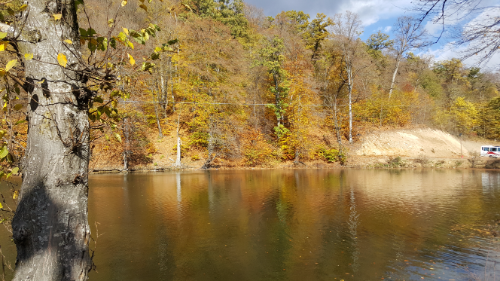
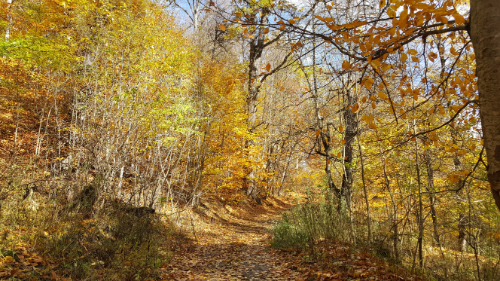
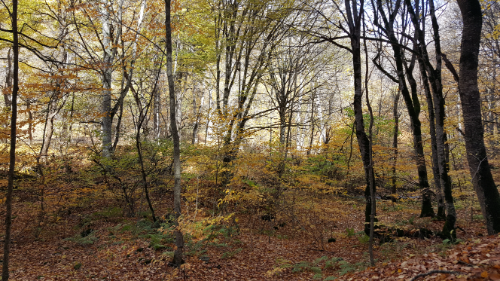 The hike itself was fabulous. The trees were at that perfect point in the fall when they’re all yellow and there are still enough leaves on them that it looks beautiful instead of depressing. The sun was shining through the trees, making the leaves look golden and the forest look mystical. At the peak of the hike, you have an amazing view of the valley and the mountains in the distance. It seriously looked like something out of a stock photo. It was also nice to have some time with Mike. Hikes are great times for good conversations! (Brace yourself for photo explosion but I seriously couldn’t pick just a few.)
The hike itself was fabulous. The trees were at that perfect point in the fall when they’re all yellow and there are still enough leaves on them that it looks beautiful instead of depressing. The sun was shining through the trees, making the leaves look golden and the forest look mystical. At the peak of the hike, you have an amazing view of the valley and the mountains in the distance. It seriously looked like something out of a stock photo. It was also nice to have some time with Mike. Hikes are great times for good conversations! (Brace yourself for photo explosion but I seriously couldn’t pick just a few.)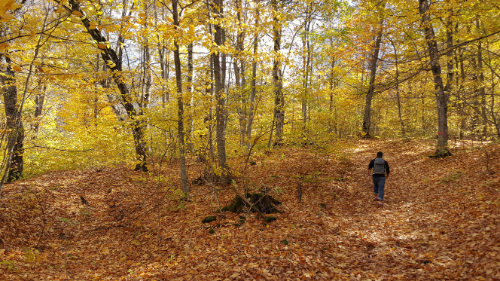

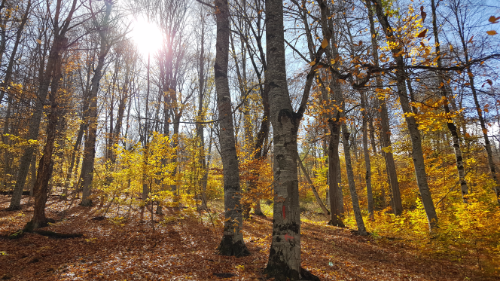
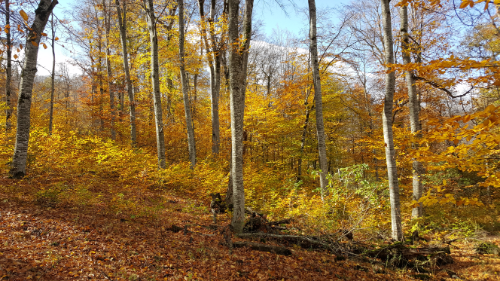
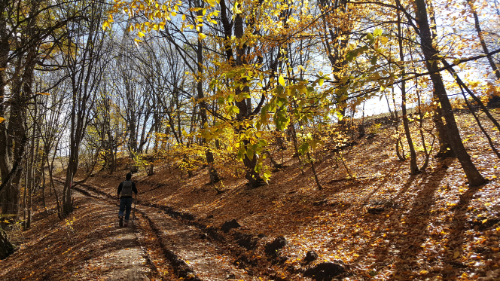
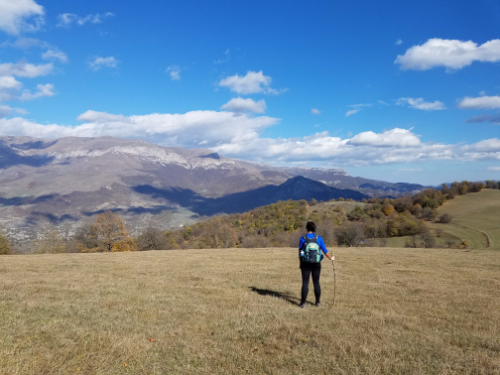


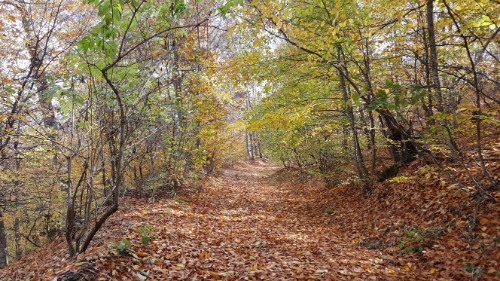


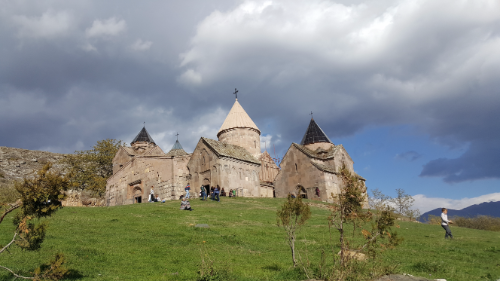
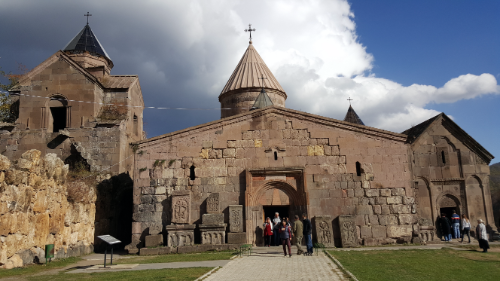
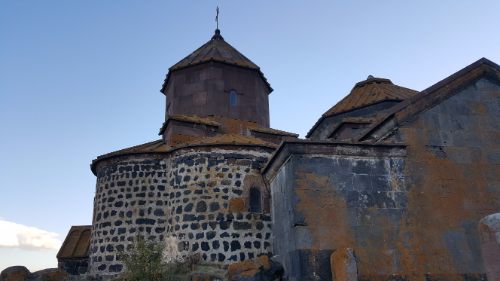
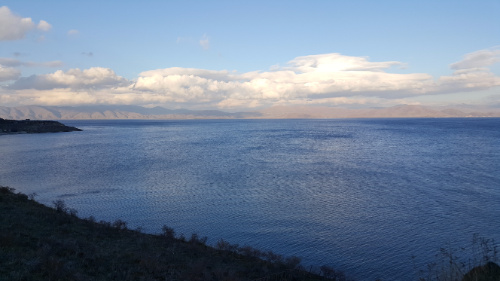
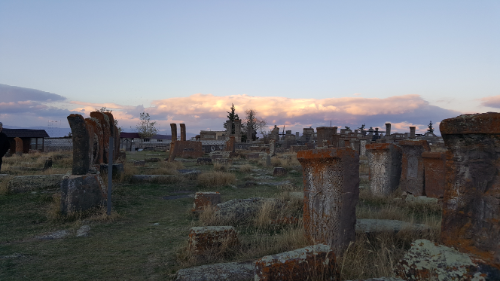
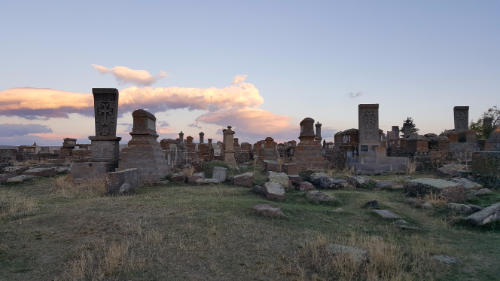 Finally, we went to Noratus. Noratus Cemetery is the largest collection of khatchkars. It used to be the second largest with the largest one in Nakhichevan, the territory to the southwest of Armenia that is currently controlled by Azerbaijan. That cemetery was destroyed by Azerbaijan between 1998 and 2005, and now Noratus takes the title.
Finally, we went to Noratus. Noratus Cemetery is the largest collection of khatchkars. It used to be the second largest with the largest one in Nakhichevan, the territory to the southwest of Armenia that is currently controlled by Azerbaijan. That cemetery was destroyed by Azerbaijan between 1998 and 2005, and now Noratus takes the title.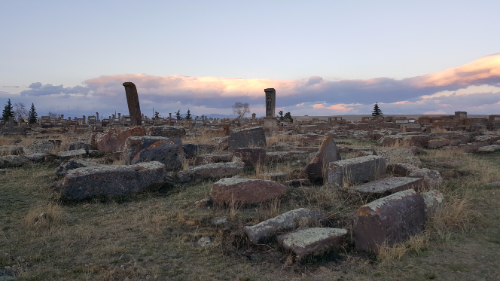 Okay, once again, SO MANY QUESTIONS. Who on earth had this idea in the first place? Where did they get so many extra helmets and swords? How dumb/blind was the army that they couldn’t tell that the “soldiers” they were seeing were a bit rectangular? I could keep going, but I’ll spare you.
Okay, once again, SO MANY QUESTIONS. Who on earth had this idea in the first place? Where did they get so many extra helmets and swords? How dumb/blind was the army that they couldn’t tell that the “soldiers” they were seeing were a bit rectangular? I could keep going, but I’ll spare you.